
The 2025 knAAC Awards
Keepers and Noteworthies in AAC
Welcome to the second annual knAAC Awards! Short for "Keepers and Noteworthies in AAC", the knAAC Awards are all about highlighting the wonderful work happening in the world of AAC! We want to help celebrate the unsung heroes of AAC who go above and beyond, not for fame or money, but because they see the impact it can make for underserved populations around the world.
All of these people and products have done impressive work, and we are grateful for how their contributions have helped AAC users. Our goal is not to run a popularity contest, but instead to try to bring attention to all of the nominees, and maybe have a little fun like a chilli cook-off or voting for our favorite superheroes.
We are happy to celebrate all of the nominees this year, including those who were selected for recognition in each category. Please click through to learn more about each of the important contributions happening in the world of AAC this year!
2024 knAAC Awards Final Results
 AAC Advocate of the Year
AAC Advocate of the Year
Jordyn Zimmerman
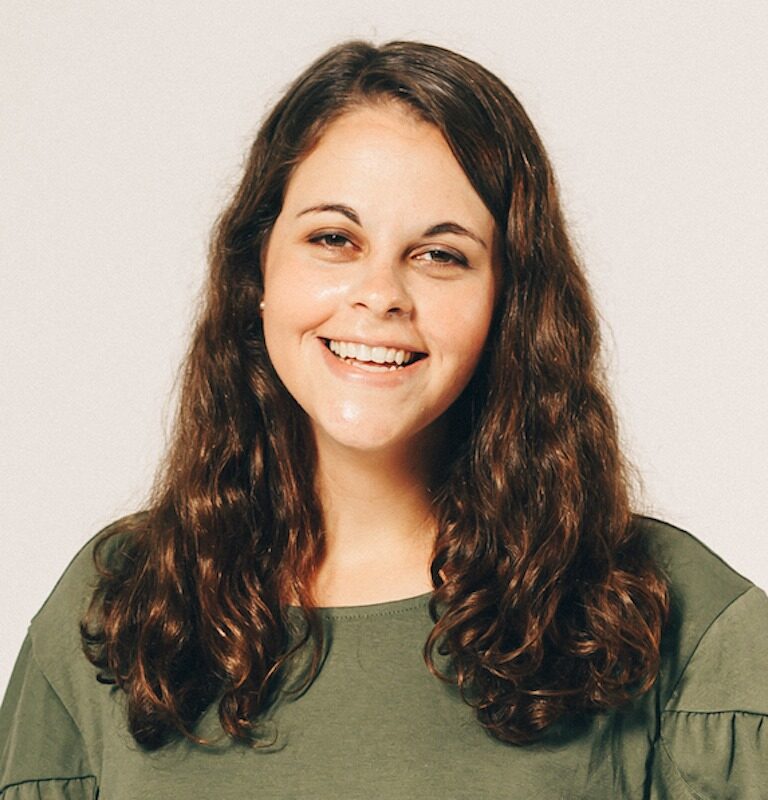 Jordyn Zimmerman is a passionate educator and disability advocate. After being diagnosed as autistic at a young age, she did not receive access to augmentative communication until the age of 18. She continues to advocate for AAC use and disability rights. She is the chair of Communication FIRST and presents regularly across the country.
Jordyn Zimmerman is a passionate educator and disability advocate. After being diagnosed as autistic at a young age, she did not receive access to augmentative communication until the age of 18. She continues to advocate for AAC use and disability rights. She is the chair of Communication FIRST and presents regularly across the country.
Lydia Dawley
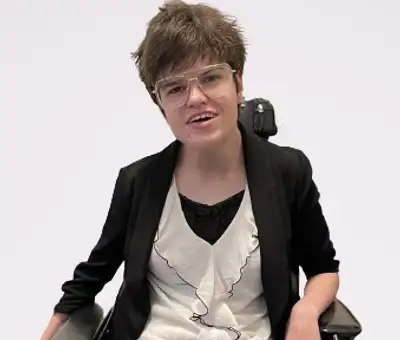 Lydia graduated with a B.S. from the University of Wisconsin. She is the founder and CEO of Click. Speak. Connect. She works as an AAC specialist and consultant with Speech-Language Pathologists, teachers, parents in access methods, faster access, device experiences and language skills related to AAC, and also mentors other AAC users to work on social skills. She is the inventor of the NadPen, an adapted stylus for touchscreen devices.
Lydia graduated with a B.S. from the University of Wisconsin. She is the founder and CEO of Click. Speak. Connect. She works as an AAC specialist and consultant with Speech-Language Pathologists, teachers, parents in access methods, faster access, device experiences and language skills related to AAC, and also mentors other AAC users to work on social skills. She is the inventor of the NadPen, an adapted stylus for touchscreen devices.
Kevin Williams
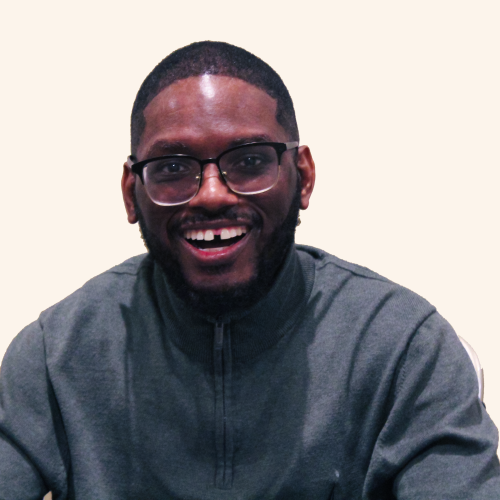 Kevin Williams is a Charlotte, NC based web developer who serves on the Executive Board for the International Society for Alternative and Augmentative Communication (ISAAC). Born and raised in Cleveland, OH, Kevin primarily uses an Alternative and Augmentative Communication (AAC) device to convey his thoughts in a clear, precise manner while speaking to people. He is passionate about advancing the lives of individuals with disabilities through assistive technology, AAC, and even adapted sporting ventures. Kevin co-authored the AAC Manifesto, Imagining Alternative Futures with Augmentative and Alternative Communication.
Kevin Williams is a Charlotte, NC based web developer who serves on the Executive Board for the International Society for Alternative and Augmentative Communication (ISAAC). Born and raised in Cleveland, OH, Kevin primarily uses an Alternative and Augmentative Communication (AAC) device to convey his thoughts in a clear, precise manner while speaking to people. He is passionate about advancing the lives of individuals with disabilities through assistive technology, AAC, and even adapted sporting ventures. Kevin co-authored the AAC Manifesto, Imagining Alternative Futures with Augmentative and Alternative Communication.
Owen McGirr
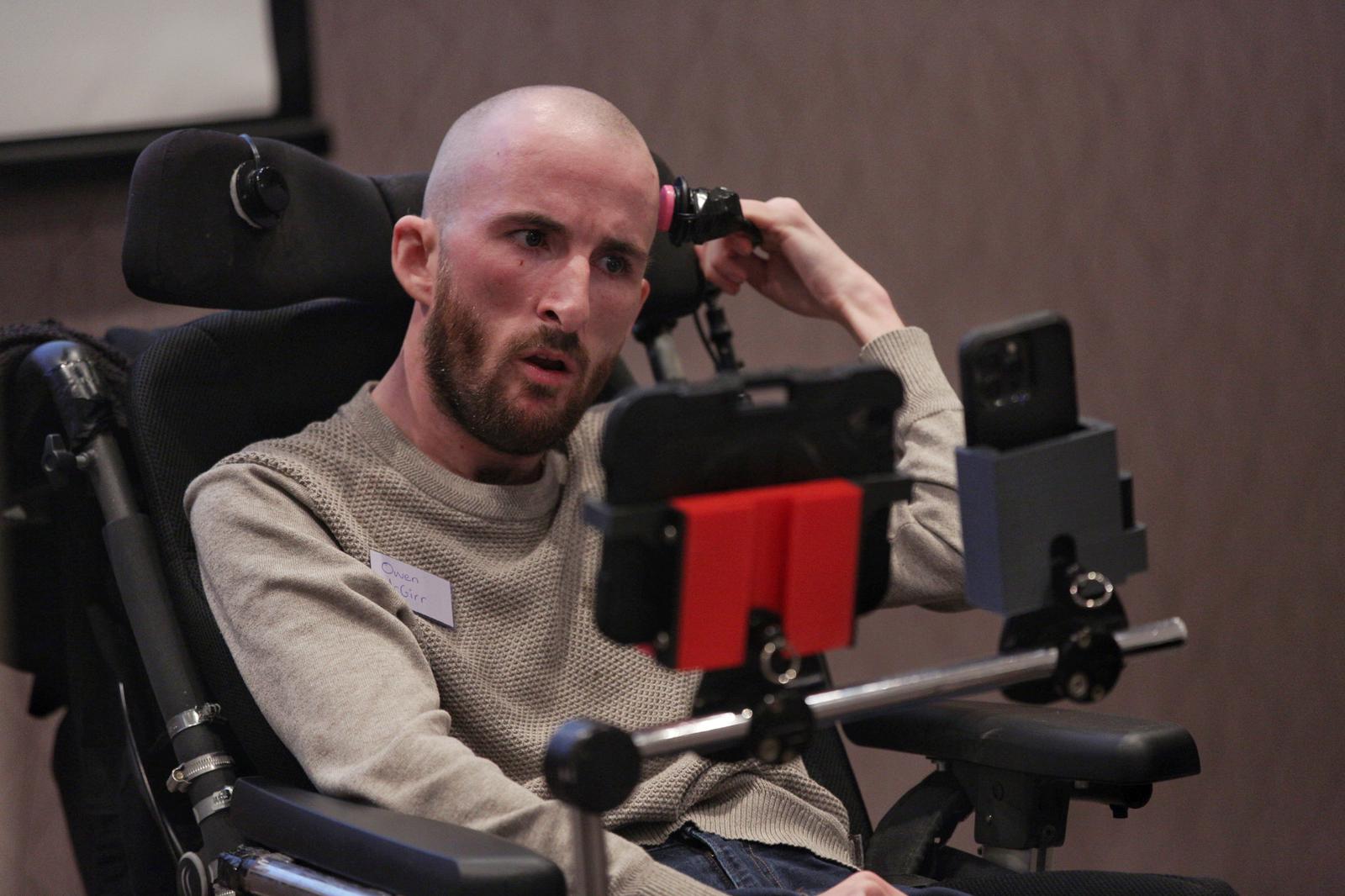 Owen is a software developer and accessibility advocate from Donegal, Ireland. He has cerebral palsy and uses adaptive switches, which has deeply informed his work creating technology for people with disabilities. In college, he researched and developed SayIt!, a speech app that helps people with limited speech communicate more easily. He later created Switchify, an Android app that allows users to control their devices using switches like buddy buttons and sip-and-puff systems. His work has received international recognition, including being named an MIT Innovator Under 35. Owen is passionate about giving disabled users more control and independence through accessible tech.
Owen is a software developer and accessibility advocate from Donegal, Ireland. He has cerebral palsy and uses adaptive switches, which has deeply informed his work creating technology for people with disabilities. In college, he researched and developed SayIt!, a speech app that helps people with limited speech communicate more easily. He later created Switchify, an Android app that allows users to control their devices using switches like buddy buttons and sip-and-puff systems. His work has received international recognition, including being named an MIT Innovator Under 35. Owen is passionate about giving disabled users more control and independence through accessible tech.
Sheridan Forster
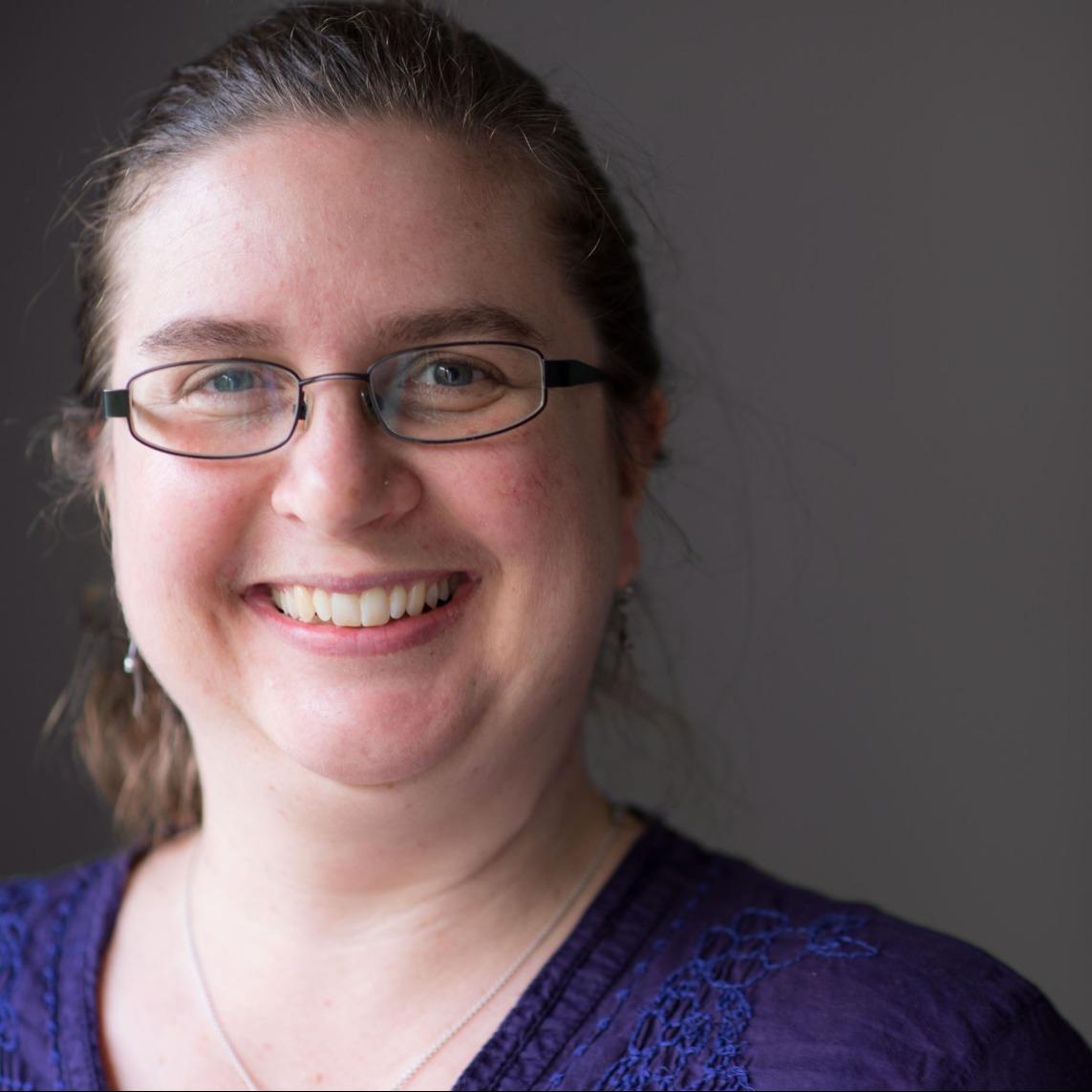 Sheridan is a speech pathologist and researcher with a particular interest in adults with profound intellectual and multiple disabilities. Sheridan advocates for individualized approaches to AAC, with or without technology, to best engage with each person. Over the past 20 years she has been driven by the question “how do I need to be in order to be with you?” She works with families and staff to work out how they need to be to optimize the communication of the adults they support or care for.
Sheridan is a speech pathologist and researcher with a particular interest in adults with profound intellectual and multiple disabilities. Sheridan advocates for individualized approaches to AAC, with or without technology, to best engage with each person. Over the past 20 years she has been driven by the question “how do I need to be in order to be with you?” She works with families and staff to work out how they need to be to optimize the communication of the adults they support or care for.
 AAC Teen Self-Advocate of the Year
AAC Teen Self-Advocate of the Year
Becca
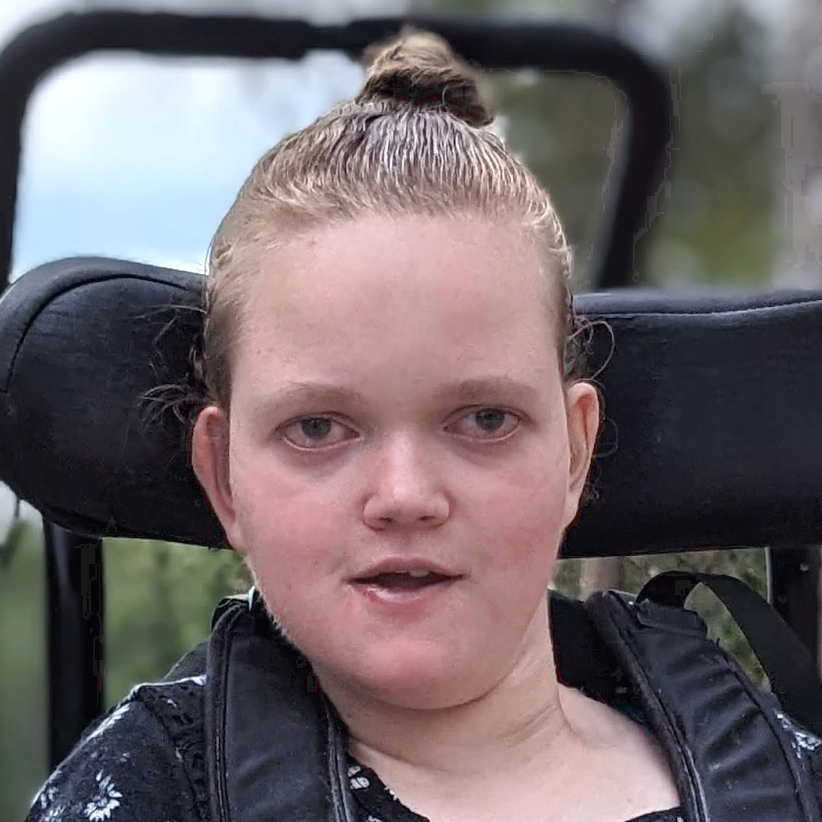 Becca started using AAC when she was five years old. She has worked hard to gradually expand her breadth of vocabulary. She is a fierce advocate, and volunteered to speak out as part of a federal Rett Syndrome panel. Becca creates weekly communication prompts on Instagram and the Rett Syndrome Facebook group because she wants people to know that everyone deserves to communicate and drive their own life choices. She has presented at multiple community and youth meetings to raise awareness of Rett Syndrome and the importance of communication for everyone. Becca insisted on taking a modified GED exam before graduating this year to prove to herself and others that she can learn just like anybody else.
Becca started using AAC when she was five years old. She has worked hard to gradually expand her breadth of vocabulary. She is a fierce advocate, and volunteered to speak out as part of a federal Rett Syndrome panel. Becca creates weekly communication prompts on Instagram and the Rett Syndrome Facebook group because she wants people to know that everyone deserves to communicate and drive their own life choices. She has presented at multiple community and youth meetings to raise awareness of Rett Syndrome and the importance of communication for everyone. Becca insisted on taking a modified GED exam before graduating this year to prove to herself and others that she can learn just like anybody else.
Himani
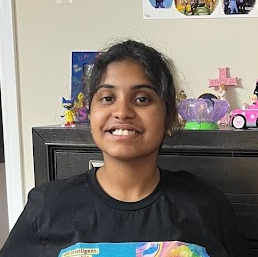 Himani was educationally neglected in her school, but quickly adopted AAC once it was made available. Since then, Himani has made several presentations in settings from her class to large conferences. She works as a PRC Ambassador, writing blogs and representing them in local conferences. She has worked with her mother, collaborating with her local librarian and California State University, East Bay to start “Storytime with AAC”, a library-based program for emergent AAC users. She has been volunteering for this program at her local library for the last 2 years. She keeps her grades high in general education and hopes to be a psychiatrist someday.
Himani was educationally neglected in her school, but quickly adopted AAC once it was made available. Since then, Himani has made several presentations in settings from her class to large conferences. She works as a PRC Ambassador, writing blogs and representing them in local conferences. She has worked with her mother, collaborating with her local librarian and California State University, East Bay to start “Storytime with AAC”, a library-based program for emergent AAC users. She has been volunteering for this program at her local library for the last 2 years. She keeps her grades high in general education and hopes to be a psychiatrist someday.
Lily
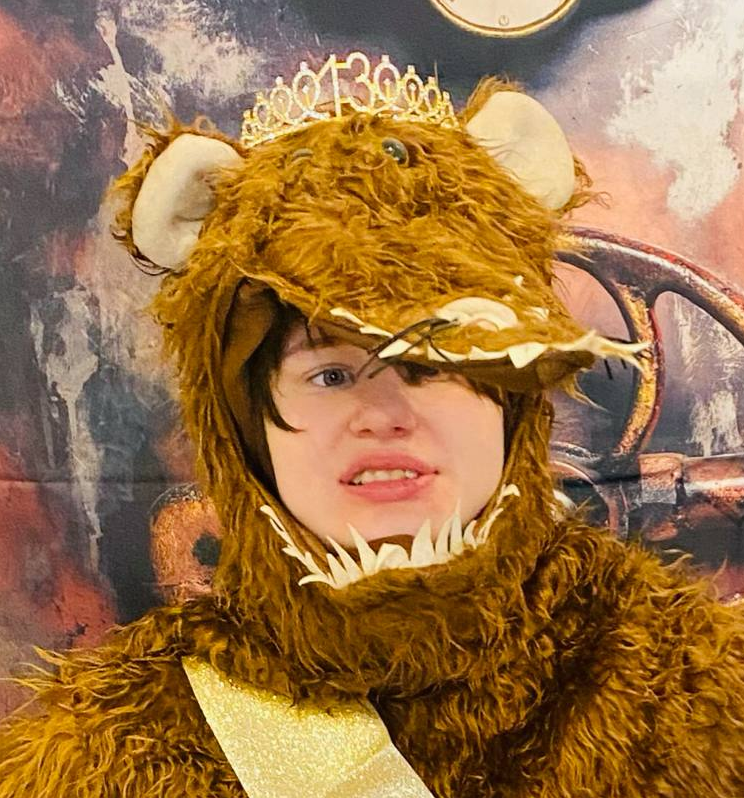 Hi, my name is Lily and I’m a fabulous teenager! I like listening to music, watching YouTube, swimming, dancing, and travel! But what I’m most passionate about is theater. I love watching plays, performing, and writing scripts. This year I took a high school creative writing course to become a better writer for my scripts. Also, I am passionate about AAC. I have over 10 AAC apps that I use to be successful in school and chat with friends. Every time I see an AAC app or AAC user I feel excited and proud. Being an AAC user is something I would never change about me.
Hi, my name is Lily and I’m a fabulous teenager! I like listening to music, watching YouTube, swimming, dancing, and travel! But what I’m most passionate about is theater. I love watching plays, performing, and writing scripts. This year I took a high school creative writing course to become a better writer for my scripts. Also, I am passionate about AAC. I have over 10 AAC apps that I use to be successful in school and chat with friends. Every time I see an AAC app or AAC user I feel excited and proud. Being an AAC user is something I would never change about me.
Tristan
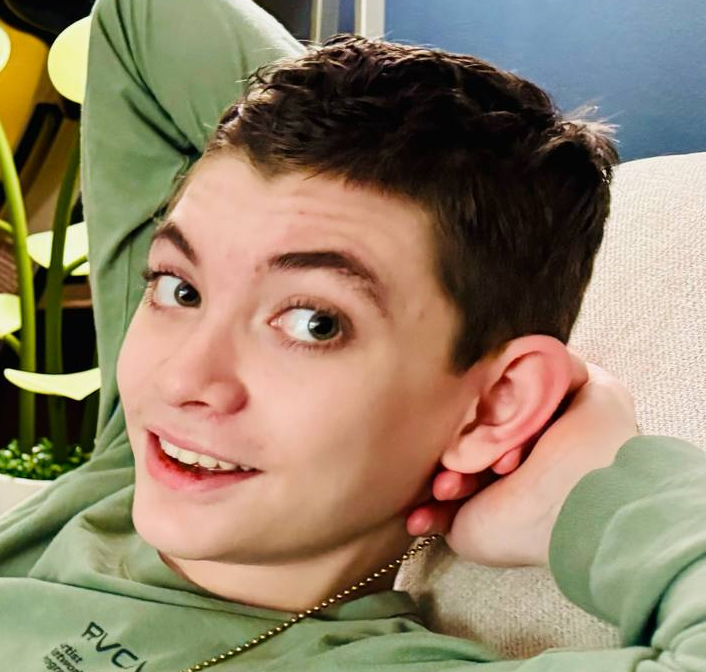 Tristan is a 14 year old autistic AAC user. He is part of several online AAC communities including AAC Voices, the International Society for Augmentative and Alternative Communication (ISAAC), and ImpAACt Voices. He enjoys reading about Ancient Egypt and Ancient China and loves all kinds of historical artifacts, especially making them with his 3D printer. He loves waterskiing, jet skiing, surfing, rock climbing, swimming, horseback riding, roller coasters and traveling. Tristan prides himself on being a good friend and especially wants to help others by being a medical advocate. When he grows up, he wants to be a stand-up comedian or a professional scuba diver who swims with sharks.
Tristan is a 14 year old autistic AAC user. He is part of several online AAC communities including AAC Voices, the International Society for Augmentative and Alternative Communication (ISAAC), and ImpAACt Voices. He enjoys reading about Ancient Egypt and Ancient China and loves all kinds of historical artifacts, especially making them with his 3D printer. He loves waterskiing, jet skiing, surfing, rock climbing, swimming, horseback riding, roller coasters and traveling. Tristan prides himself on being a good friend and especially wants to help others by being a medical advocate. When he grows up, he wants to be a stand-up comedian or a professional scuba diver who swims with sharks.
 AAC Presenter of the Year
AAC Presenter of the Year
Jordyn Zimmerman
 Jordyn Zimmerman is a passionate educator and disability advocate. After being diagnosed as autistic at a young age, she did not receive access to augmentative communication until the age of 18. She continues to advocate for AAC use and disability rights. She is the chair of Communication FIRST and presents regularly across the country.
Jordyn Zimmerman is a passionate educator and disability advocate. After being diagnosed as autistic at a young age, she did not receive access to augmentative communication until the age of 18. She continues to advocate for AAC use and disability rights. She is the chair of Communication FIRST and presents regularly across the country.
Jessica Smith
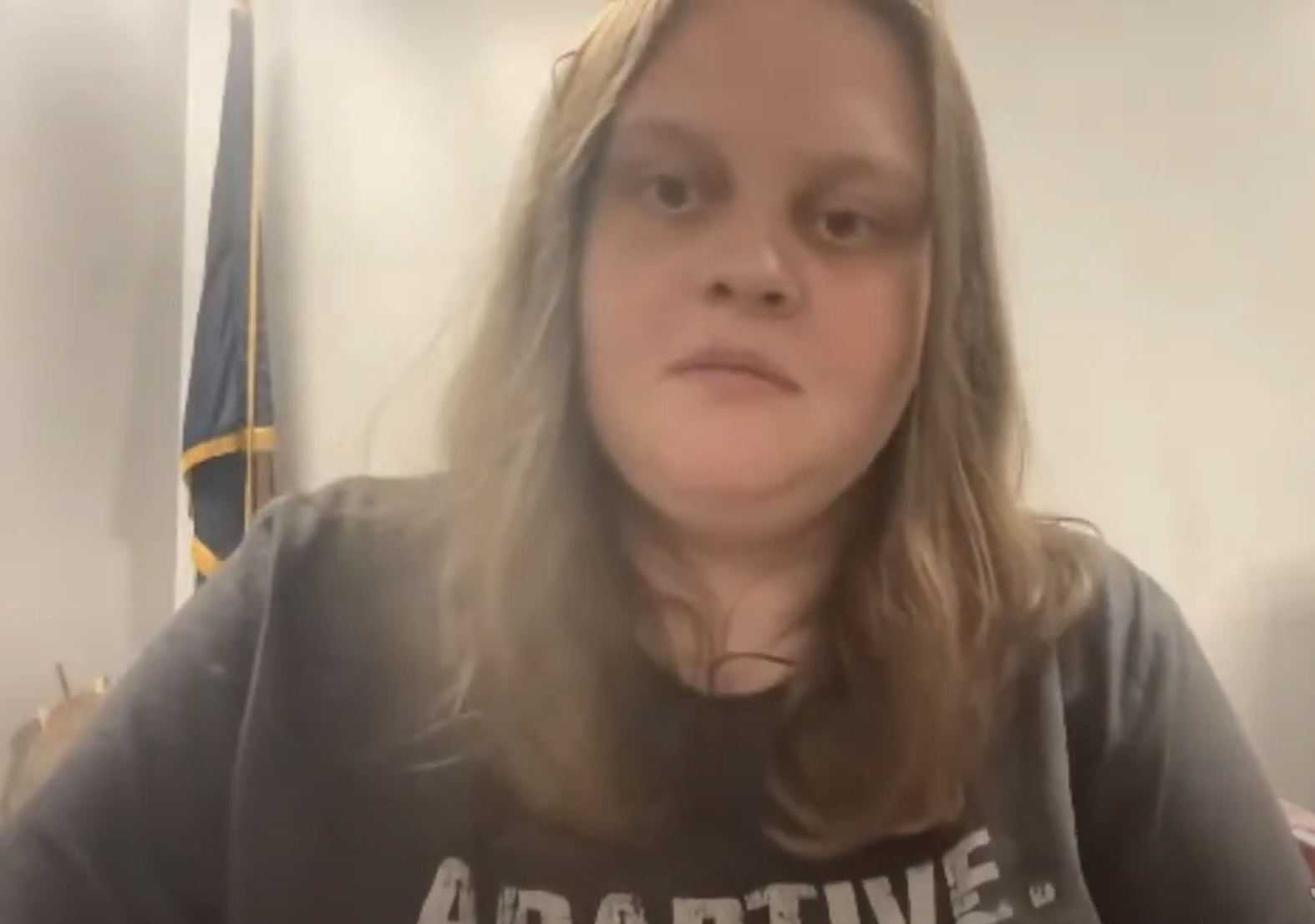 Jessica Smith is an adult with High Functioning Autism who graduated high school 2023. She makes communication boards for first responders to help them communicate with people who are non speaking. She also makes adapted switches for people with fine motor issues so they can play with toys and control appliances. She works with assistive technology and advocates regularly on Instagram. Jessica presented at AAC in the Cloud on her experiences learning about and supporting assistive technology adoption.
Jessica Smith is an adult with High Functioning Autism who graduated high school 2023. She makes communication boards for first responders to help them communicate with people who are non speaking. She also makes adapted switches for people with fine motor issues so they can play with toys and control appliances. She works with assistive technology and advocates regularly on Instagram. Jessica presented at AAC in the Cloud on her experiences learning about and supporting assistive technology adoption.
Hannah Foley
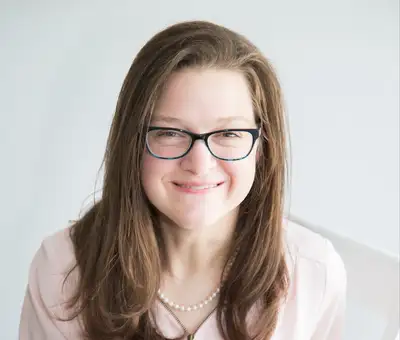 Hannah Foley, B.A. is an Assistive Technology (AT) Specialist concentrating in augmentative and alternative communication (AAC). Beyond her daily work, Hannah provides national-level consultation on AAC-related topics. She has worked for multiple AAC companies in consulting, training and technical support. Hannah earned her Bachelor of Arts in Communication from the University of Illinois Urbana-Champaign and received her Graduate Certificate in AT with concentration in AAC from the University of Illinois Chicago. She is a member of the United States Society for Augmentative and Alternative Communication (USSAAC) and is a member of USSAAC's Awareness Committee.
Hannah Foley, B.A. is an Assistive Technology (AT) Specialist concentrating in augmentative and alternative communication (AAC). Beyond her daily work, Hannah provides national-level consultation on AAC-related topics. She has worked for multiple AAC companies in consulting, training and technical support. Hannah earned her Bachelor of Arts in Communication from the University of Illinois Urbana-Champaign and received her Graduate Certificate in AT with concentration in AAC from the University of Illinois Chicago. She is a member of the United States Society for Augmentative and Alternative Communication (USSAAC) and is a member of USSAAC's Awareness Committee.
Caroline Musselwhite
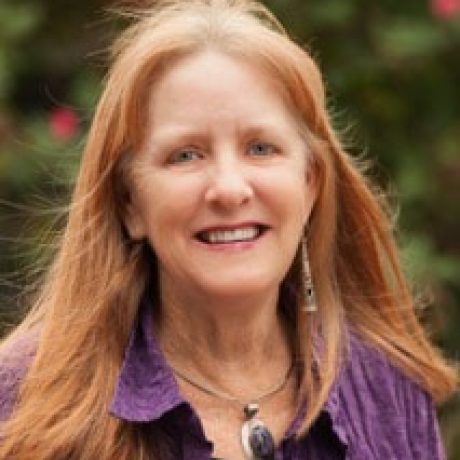 Dr. Caroline Musselwhite is an assistive technology specialist with more than 30 years of experience working with children and adolescents with severe disabilities, in a variety of settings, including Head Start, developmental day programs, and the public schools. She has also taught courses at several universities, including West Virginia University, and Western Carolina University. Dr. Musselwhite has authored a number of textbooks and “how-to” books on a range of topics. She has also authored a number of software programs and books for youth with disabilities. She has presented thousands of workshops throughout the world, and is a founding member of the Board of Directors for the International Society for Augmentative and Alternative Communication (ISAAC).
Dr. Caroline Musselwhite is an assistive technology specialist with more than 30 years of experience working with children and adolescents with severe disabilities, in a variety of settings, including Head Start, developmental day programs, and the public schools. She has also taught courses at several universities, including West Virginia University, and Western Carolina University. Dr. Musselwhite has authored a number of textbooks and “how-to” books on a range of topics. She has also authored a number of software programs and books for youth with disabilities. She has presented thousands of workshops throughout the world, and is a founding member of the Board of Directors for the International Society for Augmentative and Alternative Communication (ISAAC).
Courtney Johnson
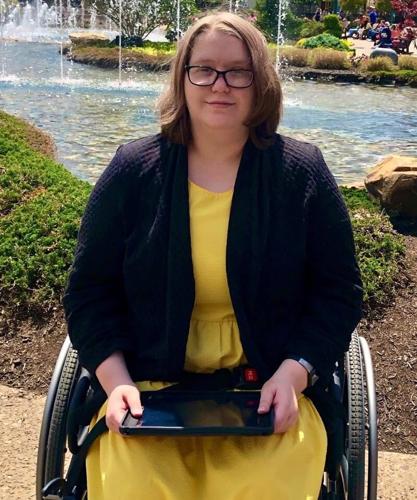 Courtney is a 26 year old autistic adult with multiple disabilities - including traumatic brain injury, Ehlers-Danlos Syndrome, and other conditions. She is nonspeaking due to aphasia and uses an AAC device to communicate! She is a graduate of the Tennessee's Partners in Policymaking program. She has also presented at multiple workshops, conferences, panels, lectures - and also established her university's first student-led group for students with intellectual, developmental, and cognitive disabilities. She presented at AAC in the Cloud on the importance of safety and autonomy for AAC users who need or receive support services.
Courtney is a 26 year old autistic adult with multiple disabilities - including traumatic brain injury, Ehlers-Danlos Syndrome, and other conditions. She is nonspeaking due to aphasia and uses an AAC device to communicate! She is a graduate of the Tennessee's Partners in Policymaking program. She has also presented at multiple workshops, conferences, panels, lectures - and also established her university's first student-led group for students with intellectual, developmental, and cognitive disabilities. She presented at AAC in the Cloud on the importance of safety and autonomy for AAC users who need or receive support services.
 AAC Researcher of the Year
AAC Researcher of the Year
Karen Erickson
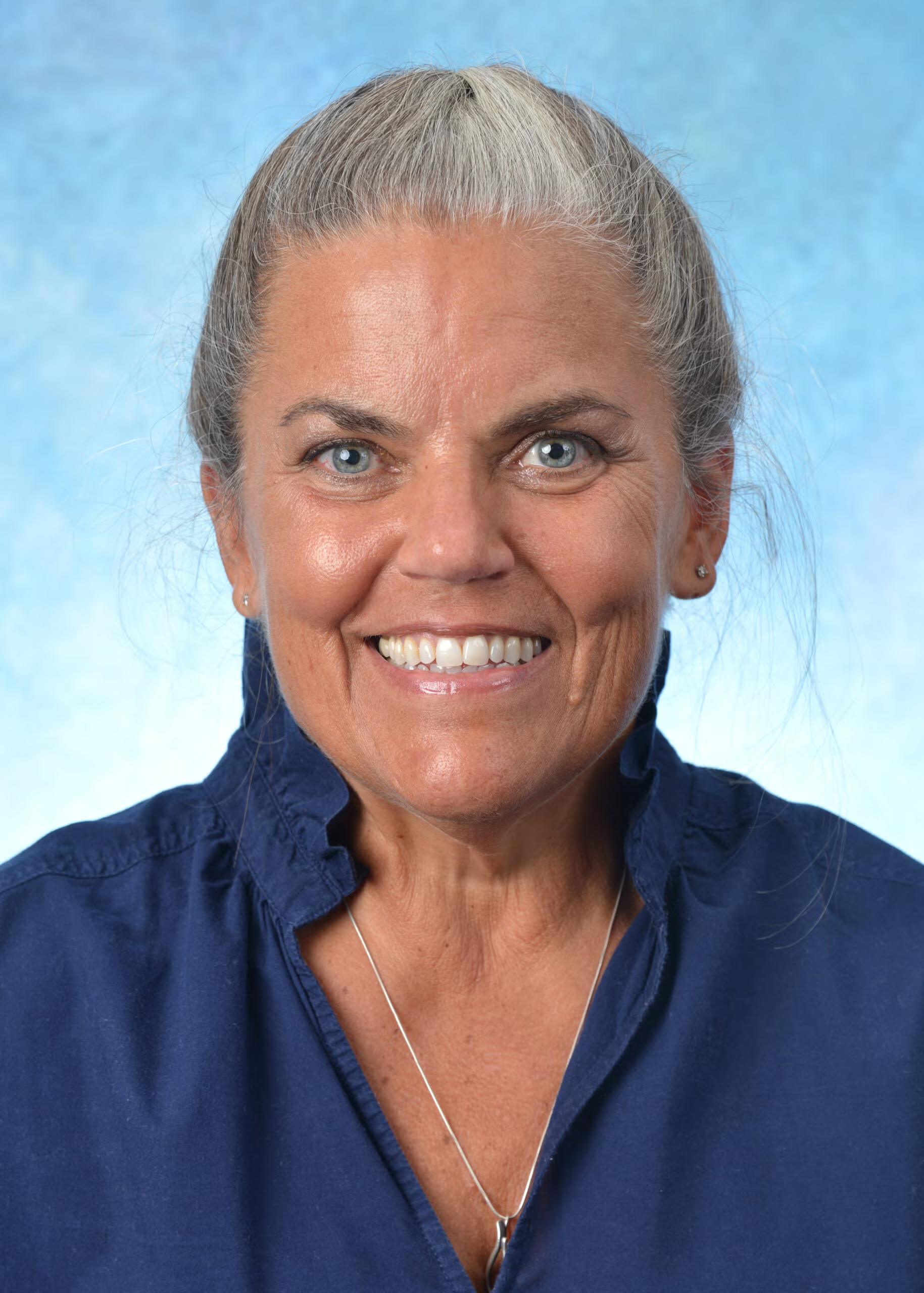 Karen Erickson, Ph.D. is the David E. and Dolores “Dee” Yoder Distinguished Professor in the Department of Health Sciences, School of Medicine, University of North Carolina at Chapel Hill. Karen is also the Director of the Center for Literacy and Disability Studies and a Professor in the Division of Speech and Hearing Sciences. A former special education teacher, Karen focuses her research on literacy and communication for individuals with extensive support needs. Recent projects have focused on creating open-source professional development and implementation supports such as those available in Project Core (project-core.com) and Project VC (projectvc.org).
Karen Erickson, Ph.D. is the David E. and Dolores “Dee” Yoder Distinguished Professor in the Department of Health Sciences, School of Medicine, University of North Carolina at Chapel Hill. Karen is also the Director of the Center for Literacy and Disability Studies and a Professor in the Division of Speech and Hearing Sciences. A former special education teacher, Karen focuses her research on literacy and communication for individuals with extensive support needs. Recent projects have focused on creating open-source professional development and implementation supports such as those available in Project Core (project-core.com) and Project VC (projectvc.org).
Owen McGirr
 Owen is a software developer and accessibility advocate from Donegal, Ireland. He has cerebral palsy and uses adaptive switches, which has deeply informed his work creating technology for people with disabilities. In college, he researched and developed SayIt!, a speech app that helps people with limited speech communicate more easily. He later created Switchify, an Android app that allows users to control their devices using switches like buddy buttons and sip-and-puff systems. His work has received international recognition, including being named an MIT Innovator Under 35. Owen is passionate about giving disabled users more control and independence through accessible tech.
Owen is a software developer and accessibility advocate from Donegal, Ireland. He has cerebral palsy and uses adaptive switches, which has deeply informed his work creating technology for people with disabilities. In college, he researched and developed SayIt!, a speech app that helps people with limited speech communicate more easily. He later created Switchify, an Android app that allows users to control their devices using switches like buddy buttons and sip-and-puff systems. His work has received international recognition, including being named an MIT Innovator Under 35. Owen is passionate about giving disabled users more control and independence through accessible tech.
Kevin Williams
 Kevin Williams is a Charlotte, NC based web developer who serves on the Executive Board for the International Society for Alternative and Augmentative Communication (ISAAC). Born and raised in Cleveland, OH, Kevin primarily uses an Alternative and Augmentative Communication (AAC) device to convey his thoughts in a clear, precise manner while speaking to people. He is passionate about advancing the lives of individuals with disabilities through assistive technology, AAC, and even adapted sporting ventures. Kevin co-authored the AAC Manifesto, Imagining Alternative Futures with Augmentative and Alternative Communication.
Kevin Williams is a Charlotte, NC based web developer who serves on the Executive Board for the International Society for Alternative and Augmentative Communication (ISAAC). Born and raised in Cleveland, OH, Kevin primarily uses an Alternative and Augmentative Communication (AAC) device to convey his thoughts in a clear, precise manner while speaking to people. He is passionate about advancing the lives of individuals with disabilities through assistive technology, AAC, and even adapted sporting ventures. Kevin co-authored the AAC Manifesto, Imagining Alternative Futures with Augmentative and Alternative Communication.
Caroline Gaddy
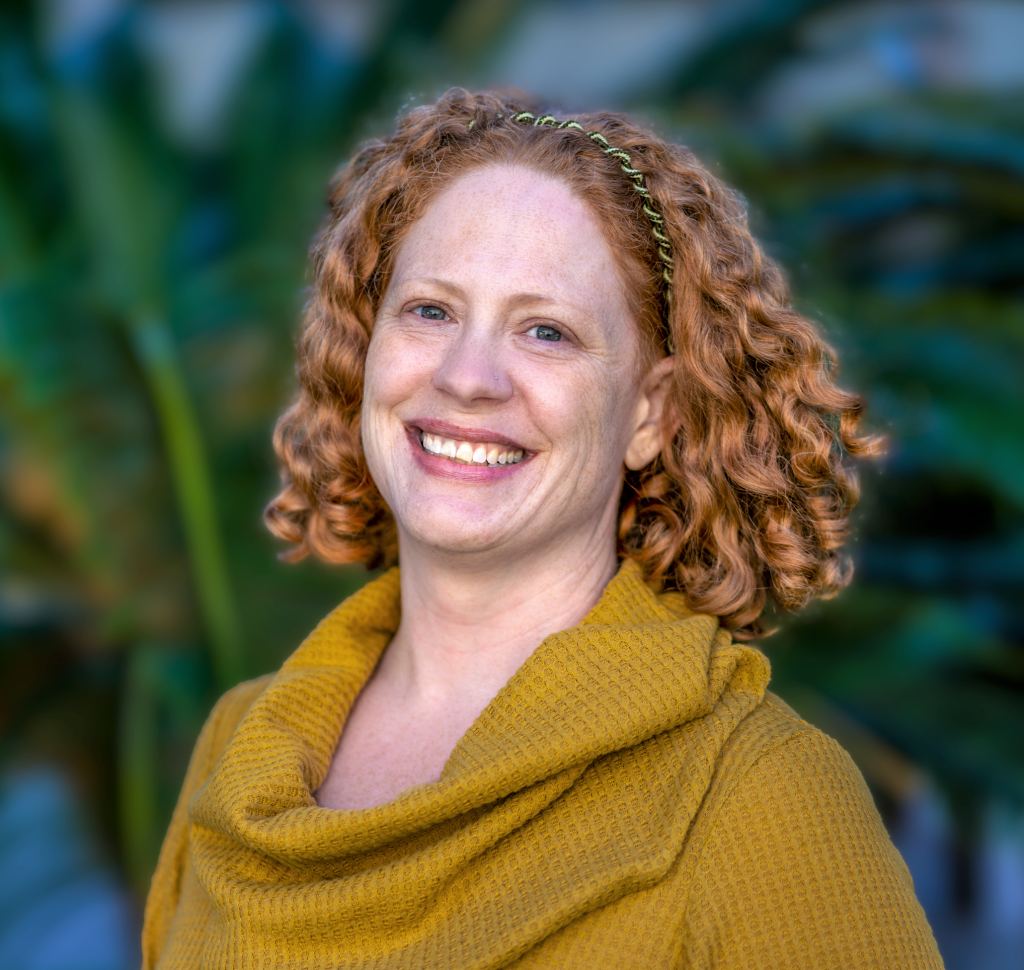 Caroline Gaddy, MFA, MA, CCC-SLP (they/she) is a speech-language pathologist, AAC specialist, disability advocate, and neurodiversity educator. They are a Learning Consultant for Tobii Dynavox and also provide
education and consultation on neurodiversity-affirming practices through their business, Vibrant Minds, LLC. Caroline worked for many years in school settings as a teacher and an SLP, and also worked in medical settings with adult and pediatric populations, often specializing in supporting communication access for people with multiple disabilities. They have presented at both state and national conferences and coauthored articles on neuro-affirming practices, AAC, and Autistic communication styles.
Caroline Gaddy, MFA, MA, CCC-SLP (they/she) is a speech-language pathologist, AAC specialist, disability advocate, and neurodiversity educator. They are a Learning Consultant for Tobii Dynavox and also provide
education and consultation on neurodiversity-affirming practices through their business, Vibrant Minds, LLC. Caroline worked for many years in school settings as a teacher and an SLP, and also worked in medical settings with adult and pediatric populations, often specializing in supporting communication access for people with multiple disabilities. They have presented at both state and national conferences and coauthored articles on neuro-affirming practices, AAC, and Autistic communication styles.
Morgan Scherer
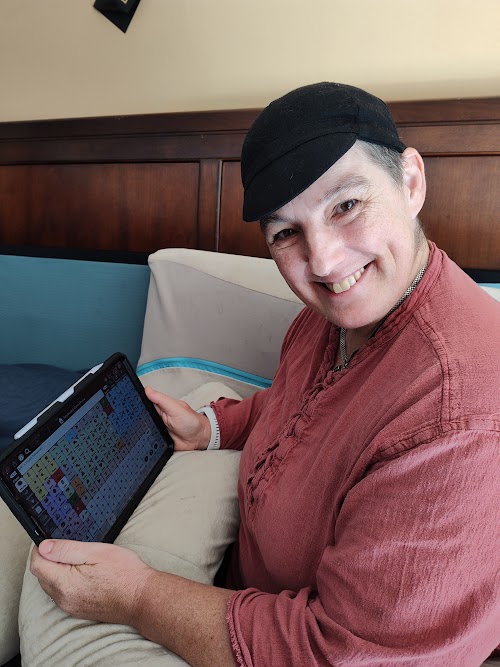 Morgan is a late-identified autistic/ADHDer, part-time AAC user, and dedicated advocate for inclusive communication. They're also a parent, partner, spoonie, and Pacific Northwest nature enthusiast. Morgan's research has focused on effort levels across AAC programs. She has compiled reports on total hits required to generate on a variety of phrases and sentences across over 50 different AAC vocabulary layouts.
Morgan is a late-identified autistic/ADHDer, part-time AAC user, and dedicated advocate for inclusive communication. They're also a parent, partner, spoonie, and Pacific Northwest nature enthusiast. Morgan's research has focused on effort levels across AAC programs. She has compiled reports on total hits required to generate on a variety of phrases and sentences across over 50 different AAC vocabulary layouts.
 AAC Community Leader of the Year
AAC Community Leader of the Year
Krista Howard
 Krista is a role model, parent, advocate and mentor to other AAC Users. As an AAC User, she has supported parents, teachers, SLPs, classroom aids, day program staff and other users of AAC in modeling AAC and sharing her journey. Krista has also completed an SLPA program as the first full-time user of AAC who is an SLPA. Krista is an international presenter who has generously shared her journey from a young girl and now into adulthood. Krista has provided AAC mentoring, training, and support in teletherapy, classrooms, day-treatment programs for adults and Virtual Social Groups
Krista is a role model, parent, advocate and mentor to other AAC Users. As an AAC User, she has supported parents, teachers, SLPs, classroom aids, day program staff and other users of AAC in modeling AAC and sharing her journey. Krista has also completed an SLPA program as the first full-time user of AAC who is an SLPA. Krista is an international presenter who has generously shared her journey from a young girl and now into adulthood. Krista has provided AAC mentoring, training, and support in teletherapy, classrooms, day-treatment programs for adults and Virtual Social Groups
Valerie Chapman-Jones
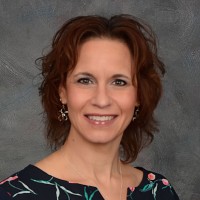 In her 25+ year career as a speech-language pathologist, Valerie has primarily worked in school-based settings but also has experience in early intervention and pediatric outpatient clinics. Her passion is Augmentative-Alternative Communication (AAC). Valerie has extensive experience with exploring, trialing, and implementing no-, light-, and high-tech AAC supports with children with a range of disabilities including cerebral palsy, genetic syndromes, autism, and apraxia of speech. Valerie is a Staff Developer – Trainer & Consultant in assistive technology at Lincoln Intermediate Unit 12 and works part-time as an SLP at Therapy and Counseling Services in Camp Hill, PA where she works exclusively with pediatric AAC users. Valerie’s goal is to help children with complex communication needs explore and find an AAC system that helps them become functional, independent communicators. Valerie believes that learning an AAC language system should be fun, not forced, and that speech therapy to teach AAC should focus on encouraging communication through novel, active language experiences. Valerie empowers the IEP teams and staff she supports to use the SETT framework and feature matching to find AAC systems that will work best for their students. She is also a strong advocate for all students to have access to evidence-based literacy instruction, which includes having a robust, dynamic AAC system that includes access to all 26 letters of the alphabet. Valerie also recognizes and honors the critical role families play in trialing and implementing AAC to support their children.
In her 25+ year career as a speech-language pathologist, Valerie has primarily worked in school-based settings but also has experience in early intervention and pediatric outpatient clinics. Her passion is Augmentative-Alternative Communication (AAC). Valerie has extensive experience with exploring, trialing, and implementing no-, light-, and high-tech AAC supports with children with a range of disabilities including cerebral palsy, genetic syndromes, autism, and apraxia of speech. Valerie is a Staff Developer – Trainer & Consultant in assistive technology at Lincoln Intermediate Unit 12 and works part-time as an SLP at Therapy and Counseling Services in Camp Hill, PA where she works exclusively with pediatric AAC users. Valerie’s goal is to help children with complex communication needs explore and find an AAC system that helps them become functional, independent communicators. Valerie believes that learning an AAC language system should be fun, not forced, and that speech therapy to teach AAC should focus on encouraging communication through novel, active language experiences. Valerie empowers the IEP teams and staff she supports to use the SETT framework and feature matching to find AAC systems that will work best for their students. She is also a strong advocate for all students to have access to evidence-based literacy instruction, which includes having a robust, dynamic AAC system that includes access to all 26 letters of the alphabet. Valerie also recognizes and honors the critical role families play in trialing and implementing AAC to support their children.
Brandi Lee Wentland
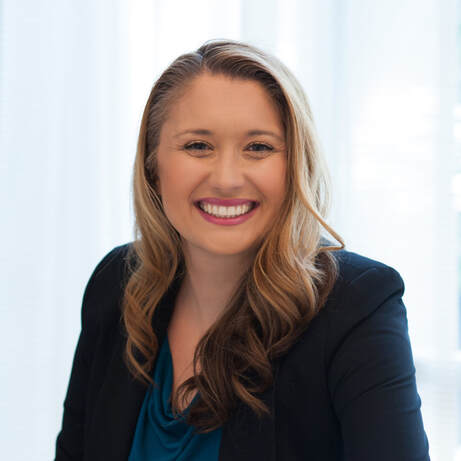 Brandi Wentland is a speech-language pathologist who specializes in AAC. She obtained her master's degree from California State University, Chico in 2014 and later returned to her alma mater to teach a graduate level course on AAC. Brandi is an AAC consultant and entrepreneur, having helped found PicSeePal, as well as We Speak AAC, an AAC-User-Led training academy, and is a board member of the Nika Project. Brandi is driven to build capacity, impart knowledge and equip others with AAC strategies. She has mentored new clinicians and presented courses on AAC around the world at conferences, schools, clinics, universities and privately held events.
Brandi Wentland is a speech-language pathologist who specializes in AAC. She obtained her master's degree from California State University, Chico in 2014 and later returned to her alma mater to teach a graduate level course on AAC. Brandi is an AAC consultant and entrepreneur, having helped found PicSeePal, as well as We Speak AAC, an AAC-User-Led training academy, and is a board member of the Nika Project. Brandi is driven to build capacity, impart knowledge and equip others with AAC strategies. She has mentored new clinicians and presented courses on AAC around the world at conferences, schools, clinics, universities and privately held events.
Beth Poss
 Beth is a Speech-Language Pathologist and is currently the Director of Educational Programs with LessonPix. She has previously served as an assistant principal, special education supervisor, curriculum writer, and assistive technology team member with Montgomery County Public Schools in Maryland. She is a co-author of Inclusive Learning 365: EdTech Strategies for Every Day of the Year, and consults and presents at a variety of international, national and state-level conferences and am available for keynote addresses, webinars, and other professional learning opportunities. She is an active participant in various online AAC communities, and is passionate about using visual supports and customized high-quality educational resources to support all students.
Beth is a Speech-Language Pathologist and is currently the Director of Educational Programs with LessonPix. She has previously served as an assistant principal, special education supervisor, curriculum writer, and assistive technology team member with Montgomery County Public Schools in Maryland. She is a co-author of Inclusive Learning 365: EdTech Strategies for Every Day of the Year, and consults and presents at a variety of international, national and state-level conferences and am available for keynote addresses, webinars, and other professional learning opportunities. She is an active participant in various online AAC communities, and is passionate about using visual supports and customized high-quality educational resources to support all students.
Kelly Fonner
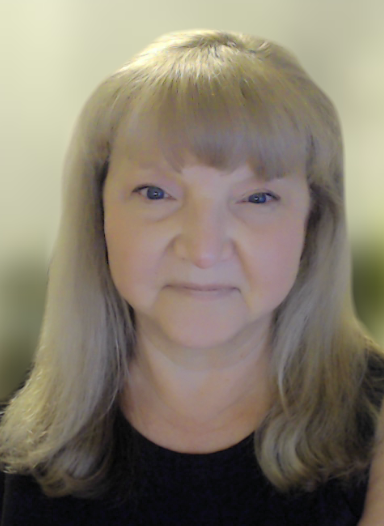 Kelly is a self-employed consultant and trainer in assistive and educational technology. Kelly has a B.S. in special education from Millersville University, an M.S. in educational technology with a minor in special education/rehabilitation technology from The Johns Hopkins University, and holds an Assistive Technology Applications Certificate of Learning from CA State University - Northridge. She has presented in 48 US states & internationally in Australia, Brazil, Canada and South Africa and has been a constant presence at both CTG and ATIA conferences. In addition to presenting, Kelly continues to teach several students online. She is a volunteer leader within the QIAT Community and the Wisconsin AAC Network, and is the 2025 recipient of the CAMA Innovation & Impact Award.
Kelly is a self-employed consultant and trainer in assistive and educational technology. Kelly has a B.S. in special education from Millersville University, an M.S. in educational technology with a minor in special education/rehabilitation technology from The Johns Hopkins University, and holds an Assistive Technology Applications Certificate of Learning from CA State University - Northridge. She has presented in 48 US states & internationally in Australia, Brazil, Canada and South Africa and has been a constant presence at both CTG and ATIA conferences. In addition to presenting, Kelly continues to teach several students online. She is a volunteer leader within the QIAT Community and the Wisconsin AAC Network, and is the 2025 recipient of the CAMA Innovation & Impact Award.
 Symbol-Centric AAC App of the Year
Symbol-Centric AAC App of the Year
TouchChat HD
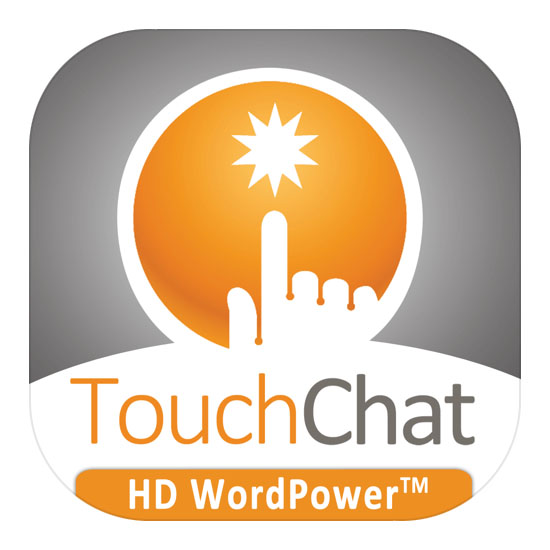 TouchChat® HD is the exclusive home to WordPower on an iOS AAC app. Fully customizable with a wide range of vocabularies, languages, and voices, TouchChat features a word-based page set so children and adults with autism, Down Syndrome, ALS, apraxia, stroke, and other conditions that affect a person’s ability to use natural speech can create flexible, spontaneous expression. This robust communication solution for iPhone®, iPad®, and Mac® computer offers access options including touch, switch scanning, and head tracking.
TouchChat® HD is the exclusive home to WordPower on an iOS AAC app. Fully customizable with a wide range of vocabularies, languages, and voices, TouchChat features a word-based page set so children and adults with autism, Down Syndrome, ALS, apraxia, stroke, and other conditions that affect a person’s ability to use natural speech can create flexible, spontaneous expression. This robust communication solution for iPhone®, iPad®, and Mac® computer offers access options including touch, switch scanning, and head tracking.
LAMP Words for Life
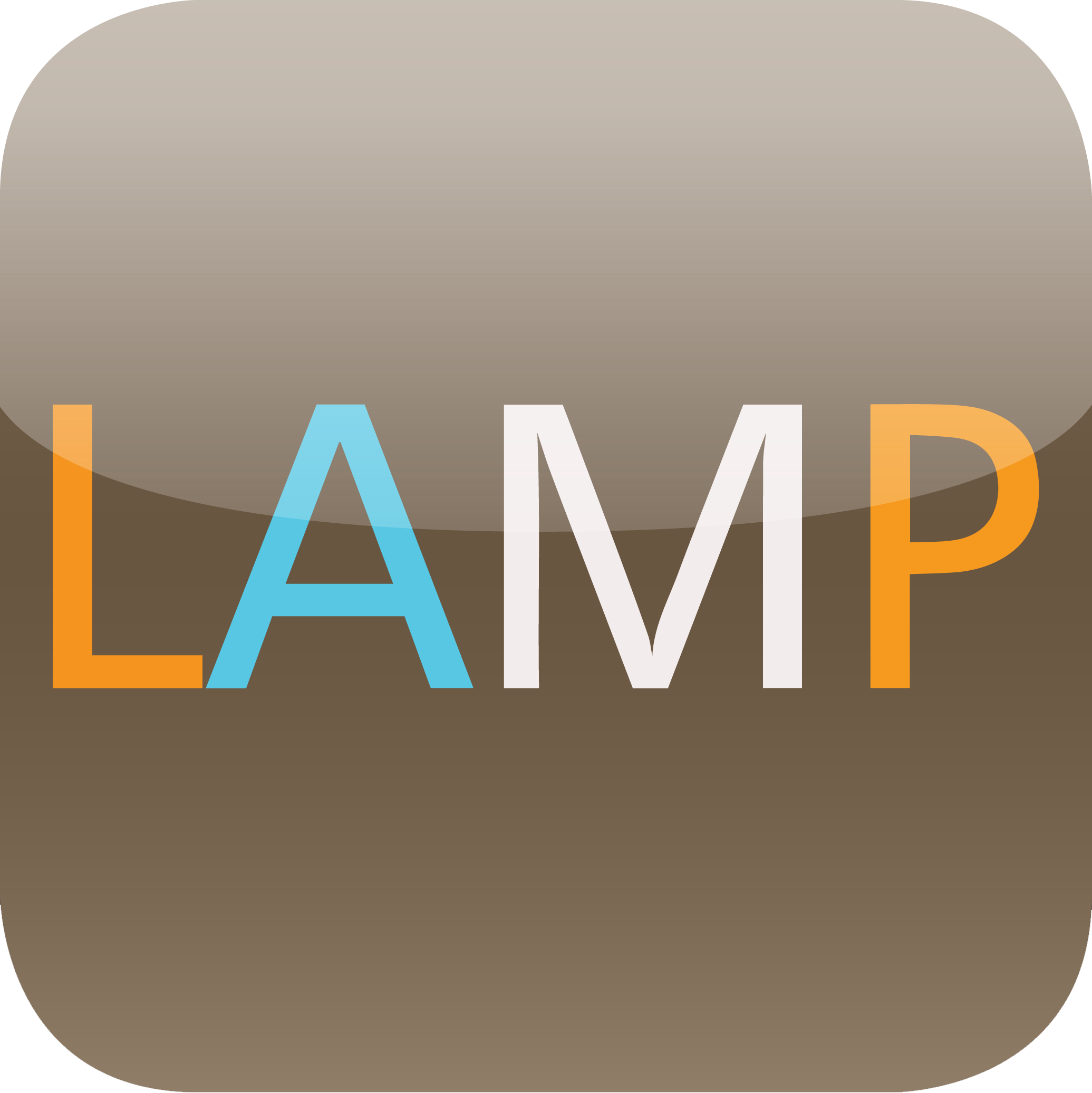 LAMP Words for Life is a renowned, motor-planning-focused vocabulary system for children with autism and other developmental disabilities. With 84-button locations and multi-meaning symbols, this iOS app combines the power of the Unity® vocabulary and Language Acquisition Motor Planning (LAMP™) approach. Available in English, Spanish, and Canadian French, LAMP Words for Life is structured for early success and allows the individual's vocabulary and communication skills to grow. Access options include touch, switch scanning, and head tracking.
LAMP Words for Life is a renowned, motor-planning-focused vocabulary system for children with autism and other developmental disabilities. With 84-button locations and multi-meaning symbols, this iOS app combines the power of the Unity® vocabulary and Language Acquisition Motor Planning (LAMP™) approach. Available in English, Spanish, and Canadian French, LAMP Words for Life is structured for early success and allows the individual's vocabulary and communication skills to grow. Access options include touch, switch scanning, and head tracking.
Proloquo2Go
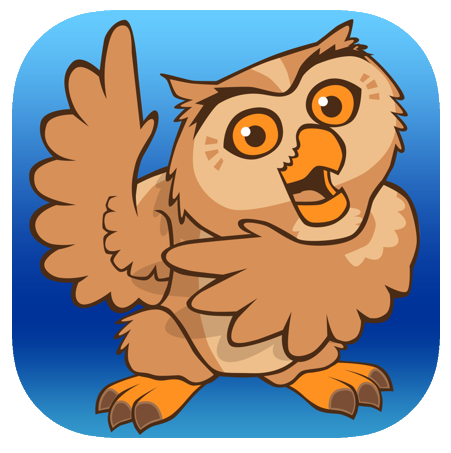 Trusted by hundreds of thousands worldwide, Proloquo2Go is the most popular AAC app for iPhone, iPad and Apple Watch. It is highly flexible and can be personalized to cater to individual needs and various disabilities.
Customize, communicate and connect with Proloquo2Go!
Trusted by hundreds of thousands worldwide, Proloquo2Go is the most popular AAC app for iPhone, iPad and Apple Watch. It is highly flexible and can be personalized to cater to individual needs and various disabilities.
Customize, communicate and connect with Proloquo2Go!
TD Snap
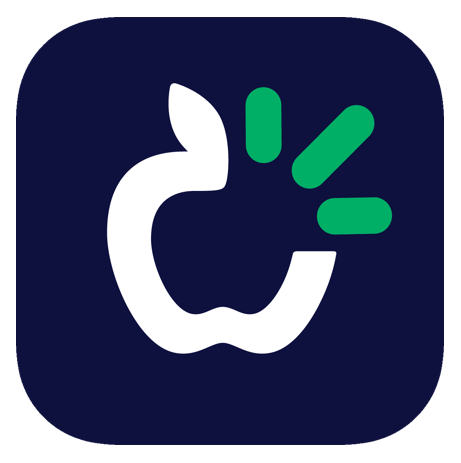 TD Snap is a flexible communication app supporting individuals with speech and language disabilities such as autism, cerebral palsy, Down syndrome, Rett syndrome, and aphasia. It meets users where they are while fostering the development and growthof communication, language, and literacy skills. Accessible via touch, eye gaze, and scanning, this symbol
TD Snap is a flexible communication app supporting individuals with speech and language disabilities such as autism, cerebral palsy, Down syndrome, Rett syndrome, and aphasia. It meets users where they are while fostering the development and growthof communication, language, and literacy skills. Accessible via touch, eye gaze, and scanning, this symbol
Grid
 Grid is used by children and adults with communication difficulties across the world to have a voice and live more independently. Available on Windows and iPad, Grid always includes our premier symbol-centric vocabularies: Super Core, a research-based core vocabulary, and Voco Chat, a pragmatically organized symbol vocabulary. Grid can be used with a range of symbol libraries, including SymbolStix, PCS, and Widgit, with a wide variety of grid sets for all abilities and access modalities.
Grid is used by children and adults with communication difficulties across the world to have a voice and live more independently. Available on Windows and iPad, Grid always includes our premier symbol-centric vocabularies: Super Core, a research-based core vocabulary, and Voco Chat, a pragmatically organized symbol vocabulary. Grid can be used with a range of symbol libraries, including SymbolStix, PCS, and Widgit, with a wide variety of grid sets for all abilities and access modalities.
 Text-Centric AAC App of the Year
Text-Centric AAC App of the Year
Proloquo4Text
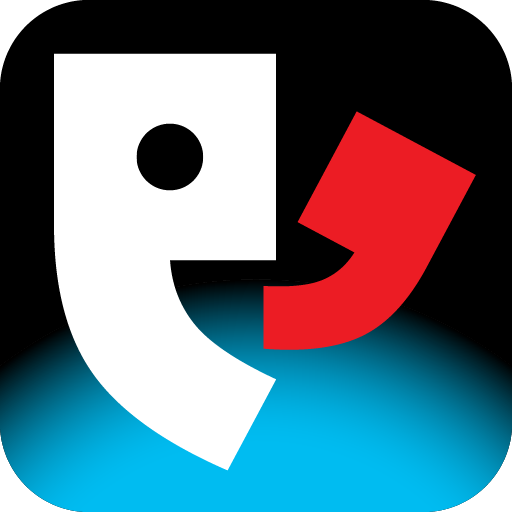 Proloquo4Text is an intuitive Text to Speech app for iPad, iPhone and Apple Watch designed for people who can write but cannot rely on speech. This app can fit a variety of communication settings - it is as useful for social interaction as for giving a presentation.
Proloquo4Text is an intuitive Text to Speech app for iPad, iPhone and Apple Watch designed for people who can write but cannot rely on speech. This app can fit a variety of communication settings - it is as useful for social interaction as for giving a presentation.
ClaroCom Pro
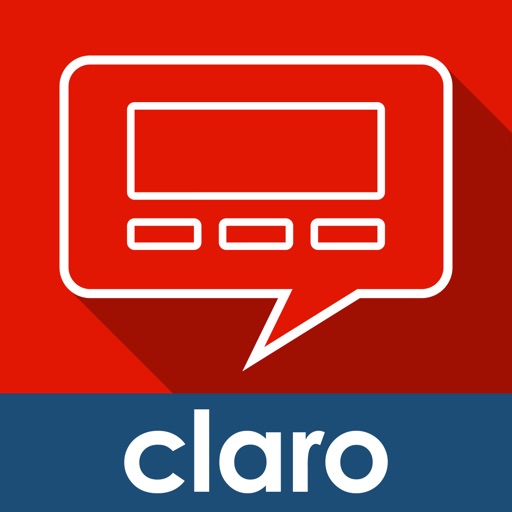 ClaroCom is an iPad or iPhone App for AAC (Augmentative and Alternative Communication). ClaroCom helps to replace speech for those with impairments in the production of spoken language. ClaroCom is suitable for children or adults with some or full literacy, and can assist users who have limited or no speech and language difficulties.
ClaroCom is an iPad or iPhone App for AAC (Augmentative and Alternative Communication). ClaroCom helps to replace speech for those with impairments in the production of spoken language. ClaroCom is suitable for children or adults with some or full literacy, and can assist users who have limited or no speech and language difficulties.
Predictable
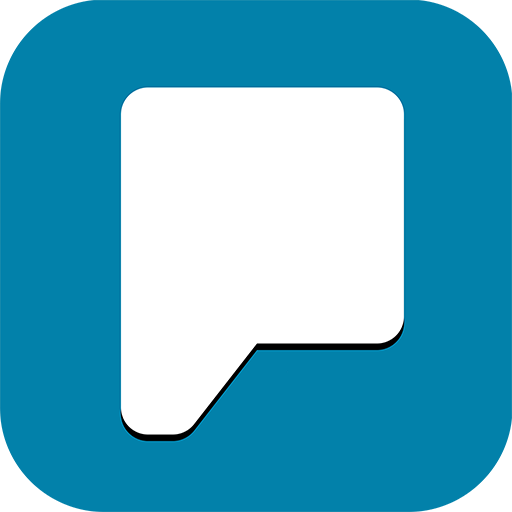 Predictable, is an augmentative and alternative communication (AAC) text-to-speech app. Designed for people who cannot speak because of conditions such as ALS/MND, autism, cerebral palsy, down's syndrome, learning difficulties, stroke / aphasia, laryngectomy and apraxia.
Predictable, is an augmentative and alternative communication (AAC) text-to-speech app. Designed for people who cannot speak because of conditions such as ALS/MND, autism, cerebral palsy, down's syndrome, learning difficulties, stroke / aphasia, laryngectomy and apraxia.
Speech Assistant AAC
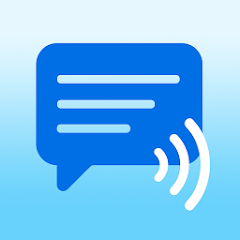 Speech Assistant AAC is a text-to-speech app designed for people who are speech impaired, for example due to Aphasia, MND/ALS, Autism, Stroke, Cerebral Palsy or other speech problems.
With the app you can create categories and phrases, which are placed on buttons. With these buttons you can create messages that can be shown or spoken (text-to-speech). It is also possible to type any text using the keyboard.
Speech Assistant AAC is a text-to-speech app designed for people who are speech impaired, for example due to Aphasia, MND/ALS, Autism, Stroke, Cerebral Palsy or other speech problems.
With the app you can create categories and phrases, which are placed on buttons. With these buttons you can create messages that can be shown or spoken (text-to-speech). It is also possible to type any text using the keyboard.
Vocable
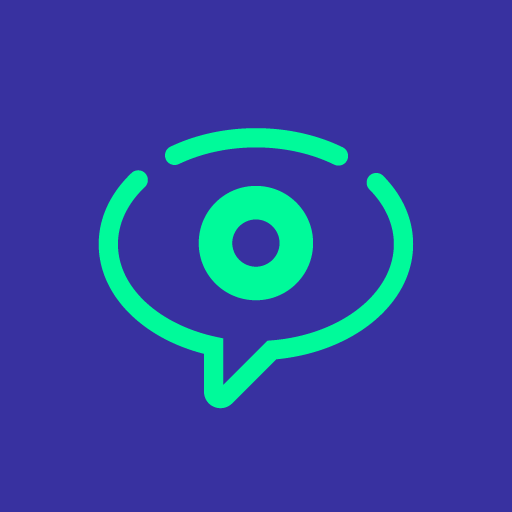 Through head tracking or touch, Vocable gives a voice to all. Users have the ability to create a customized library of words, phrases and categories for every day use, or use the power of AI to assist with active conversation. Devices that do not support head tracking will only work with touch.
Through head tracking or touch, Vocable gives a voice to all. Users have the ability to create a customized library of words, phrases and categories for every day use, or use the power of AI to assist with active conversation. Devices that do not support head tracking will only work with touch.
 Up-And-Coming AAC App of the Year
Up-And-Coming AAC App of the Year
Weave Chat AAC
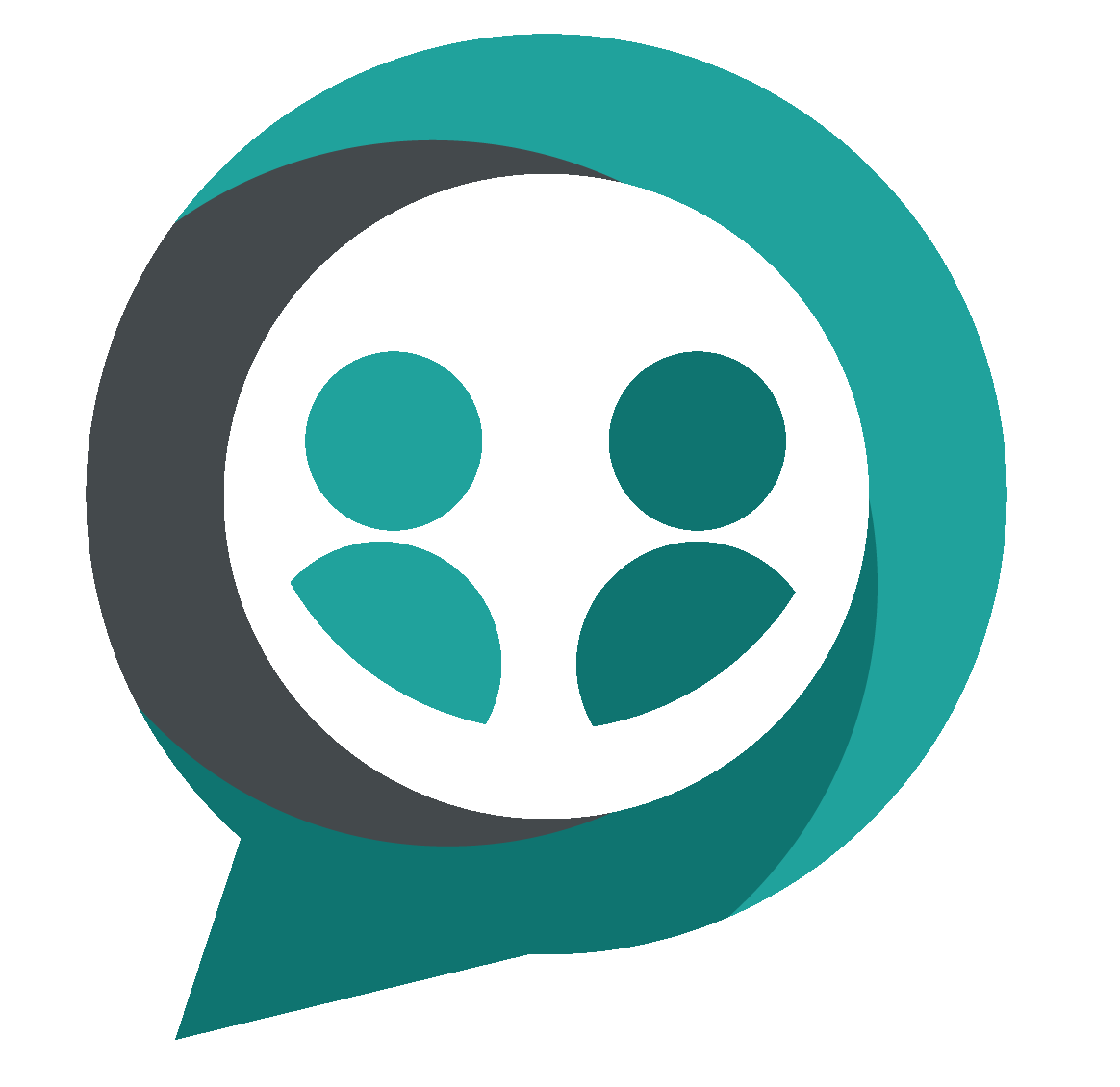 Weave Chat AAC is a free and dynamic AAC application that can be used on iOS, Android (including Chromebooks), and Kindle devices. There are several boards to choose from, including the default “scrolling” board, which is designed to be used on a phone; additionally, there are a variety of grid boards, many of which are designed for the larger screen of a tablet. Features include custom buttons and phrases; record speech to a button; word finder; symbol or text-only functionality; in-app support; and individual & group texting with symbols and/or words. Spanish will be available in early 2025.
Weave Chat AAC is a free and dynamic AAC application that can be used on iOS, Android (including Chromebooks), and Kindle devices. There are several boards to choose from, including the default “scrolling” board, which is designed to be used on a phone; additionally, there are a variety of grid boards, many of which are designed for the larger screen of a tablet. Features include custom buttons and phrases; record speech to a button; word finder; symbol or text-only functionality; in-app support; and individual & group texting with symbols and/or words. Spanish will be available in early 2025.
Proloquo
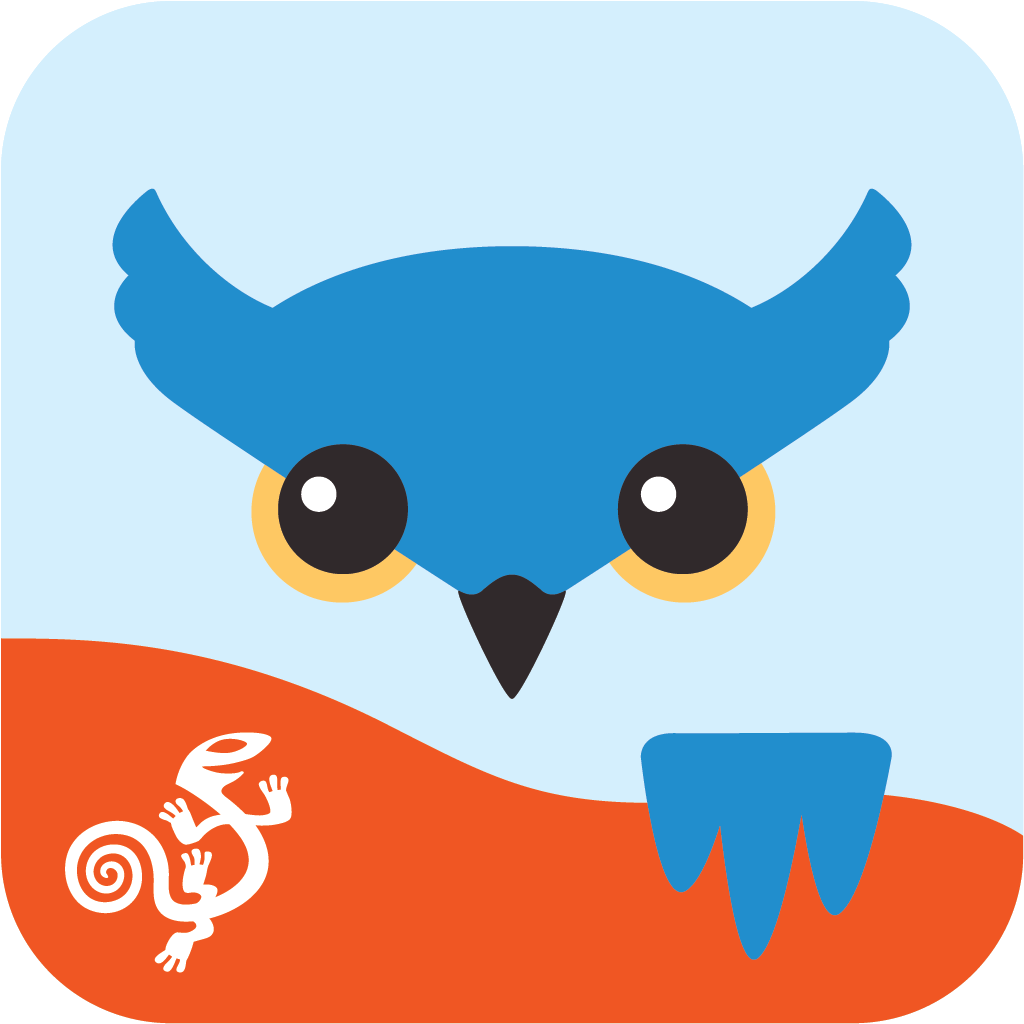 Proloquo is a comprehensive AAC app available for iPad and iPhone, expertly crafted to fit everyone from toddlers to adults. It's more than just a communication tool; it's a gateway to language development and effective communication.
Proloquo is a comprehensive AAC app available for iPad and iPhone, expertly crafted to fit everyone from toddlers to adults. It's more than just a communication tool; it's a gateway to language development and effective communication.
Flexspeak
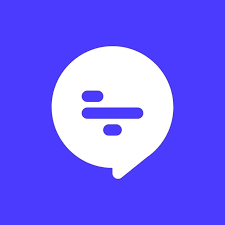 Experience communication with Flexspeak – the cutting-edge augmentative and alternative communication (AAC) app for people who cannot speak or have difficulty speaking.
Experience communication with Flexspeak – the cutting-edge augmentative and alternative communication (AAC) app for people who cannot speak or have difficulty speaking.
AsTeRICS Grid
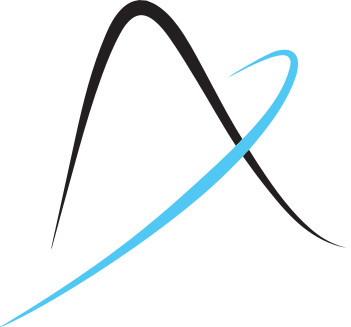 AsTeRICS Grid is a free and open source AAC application.
It is web-based and can operate on any web-enabled device. Originally created in 2020, AsTeRICS Grid is
seeing renewed development and new features being added on a regular basis. It is free, flexible, and available
in many different languages.
AsTeRICS Grid is a free and open source AAC application.
It is web-based and can operate on any web-enabled device. Originally created in 2020, AsTeRICS Grid is
seeing renewed development and new features being added on a regular basis. It is free, flexible, and available
in many different languages.
VoiceItt2
 The Voiceitt2 solution offers groundbreaking voice recognition technology based on AI, that allows people with speech disabilities to communicate using their own voice, which it translates into standard speech so that it can be understood by others. No need to tap symbols or write text to communicate. Just speak!
The Voiceitt2 solution offers groundbreaking voice recognition technology based on AI, that allows people with speech disabilities to communicate using their own voice, which it translates into standard speech so that it can be understood by others. No need to tap symbols or write text to communicate. Just speak!
 Best New AAC Feature
Best New AAC Feature
Flexspeak
Message Translation
 Flexspeak allows for real-time translation from
one language to another. The app allows you to
craft a message in one language, and then
automatically speak the full sentence out loud
in another language.
Flexspeak allows for real-time translation from
one language to another. The app allows you to
craft a message in one language, and then
automatically speak the full sentence out loud
in another language.
Proloquo
Thinking Space
 Thinking Space allows you to visualize and organize your thoughts. You can place words and symbols in Thinking Space and move them around to rearrange them, connect concepts, or communicate. You can quickly and easily save the contents of Thinking Space. Simply tap the Share button in the top right corner of Thinking Space, and save as a photo. You can then save your photo to your camera roll, print, or share with someone else.
Thinking Space allows you to visualize and organize your thoughts. You can place words and symbols in Thinking Space and move them around to rearrange them, connect concepts, or communicate. You can quickly and easily save the contents of Thinking Space. Simply tap the Share button in the top right corner of Thinking Space, and save as a photo. You can then save your photo to your camera roll, print, or share with someone else.
TD Snap
Vocab Filter
 TD Snap's vocab filter allows you to pre-select a
subset of the full vocabulary and only show that
subset of buttons to the AAC user. By filtering
to a specific vocabulary subset, the user can see the
current focus words with less distraction
while developing motor plans for the full vocabulary.
TD Snap's vocab filter allows you to pre-select a
subset of the full vocabulary and only show that
subset of buttons to the AAC user. By filtering
to a specific vocabulary subset, the user can see the
current focus words with less distraction
while developing motor plans for the full vocabulary.
Bridging Voice
AI Voices
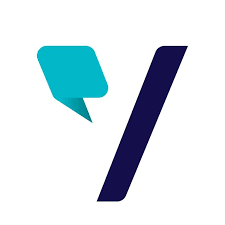 Bridging Voice has partnered with ElevenLabs to
grant free access to their AI-generated,
user-personalized voices, for any person diagnosed
with ALS. Voice cloning support is available
to those in the US who have an ALS diagnosis.
Bridging Voice has partnered with ElevenLabs to
grant free access to their AI-generated,
user-personalized voices, for any person diagnosed
with ALS. Voice cloning support is available
to those in the US who have an ALS diagnosis.
 AAC User Community of the Year
AAC User Community of the Year
impAACt Voices
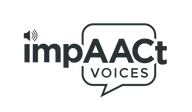 impAACt Voices' Hangouts are a virtual venue where Augmentative and Alternative Communication (AAC) users meet to build relationships by socializing with their peers of all abilities.
Hangouts, for ages 14 and older, are led by AAC users and rooted in compassion, belonging, and community. They are a fun way to foster connections, have lively discussions, join in activities, and most importantly, enjoy yourself. Hosted Hangouts are hosted by expert ImpAACt Leaders and are every second Tuesday of each month from 6:00 PM to 7:00 PM ET.
Star-guest speakers join the Hangouts to uplift and encourage AAC users. They discuss what they are working on and pass down valuable insights to inspire AAC users to pursue their dreams.
impAACt Voices' Hangouts are a virtual venue where Augmentative and Alternative Communication (AAC) users meet to build relationships by socializing with their peers of all abilities.
Hangouts, for ages 14 and older, are led by AAC users and rooted in compassion, belonging, and community. They are a fun way to foster connections, have lively discussions, join in activities, and most importantly, enjoy yourself. Hosted Hangouts are hosted by expert ImpAACt Leaders and are every second Tuesday of each month from 6:00 PM to 7:00 PM ET.
Star-guest speakers join the Hangouts to uplift and encourage AAC users. They discuss what they are working on and pass down valuable insights to inspire AAC users to pursue their dreams.
TechOwl weekly meetups
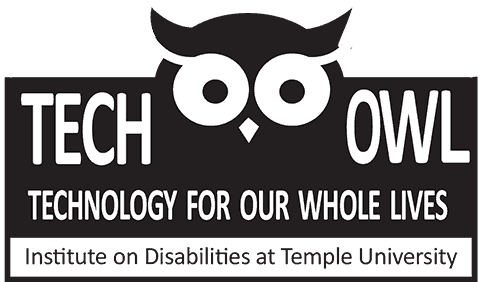 At TechOWL, we have a weekly meetup for people who use AAC. Many of our past ACES participants have become regulars. Each week we look forward to learning new tech, troubleshooting device challenges, and talking AAC.
At TechOWL, we have a weekly meetup for people who use AAC. Many of our past ACES participants have become regulars. Each week we look forward to learning new tech, troubleshooting device challenges, and talking AAC.
Adult User Community
 AssisstiveWare’s Adult AAC User Community group is to provide support and share information. Members can chat with AssistiveWare developers and Support team. Note: If you need assistance we encourage you to contact support@assistiveware.com for 1:1 help.
AssisstiveWare’s Adult AAC User Community group is to provide support and share information. Members can chat with AssistiveWare developers and Support team. Note: If you need assistance we encourage you to contact support@assistiveware.com for 1:1 help.
Ask Me, I'm An AAC User
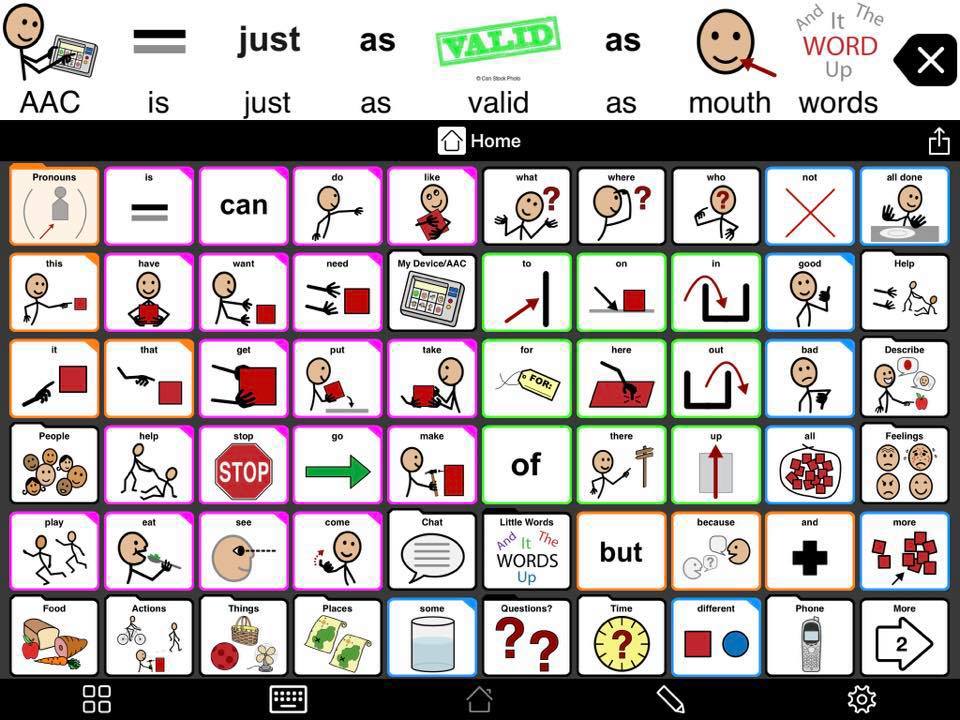 This is a Group where AAC users are the authority on AAC and here AAC users, SLPs, support staff, doctors, parents, family, and others who are interested in AAC, can ask questions and get advice and some insight from actual AAC users!
We are * Not* an autism specific AAC group! While we do have a lot of autostoc member we do also have alot of allist (non autistoc AAC users as wellour goal prioritize the voices of the general aAC user community!
This is a Group where AAC users are the authority on AAC and here AAC users, SLPs, support staff, doctors, parents, family, and others who are interested in AAC, can ask questions and get advice and some insight from actual AAC users!
We are * Not* an autism specific AAC group! While we do have a lot of autostoc member we do also have alot of allist (non autistoc AAC users as wellour goal prioritize the voices of the general aAC user community!
Hardcore AAC
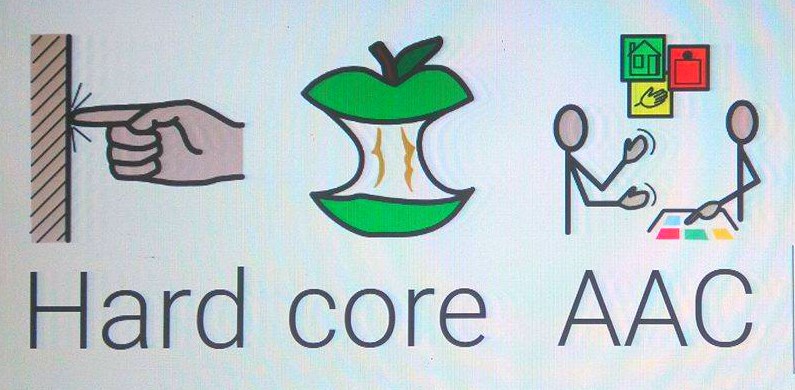 This is a radical group!!!!
WE DO BELIEVE IN THE SOCIAL MODEL OF DISABILITY AND WE ARE USER LED! IN THIS GROUP DISABLED AUGMENTATIVE AND ALTERNATIVE COMMUNICATION USERS ARE THE *MOST IMPORTANT*PEOPLE [I'm sorry for shout ing ]We are Hardcore AAC, a collective of people who believe in the right to communication for people without biological speech and other impairments and use augmentative and alternative communication (AAC)this group absolutely believes in access to AAC for all. A lot of people says language makes us human. so we take any denial of giving anybody AAC a crime! This is a radical group!!!!
This is a radical group!!!!
WE DO BELIEVE IN THE SOCIAL MODEL OF DISABILITY AND WE ARE USER LED! IN THIS GROUP DISABLED AUGMENTATIVE AND ALTERNATIVE COMMUNICATION USERS ARE THE *MOST IMPORTANT*PEOPLE [I'm sorry for shout ing ]We are Hardcore AAC, a collective of people who believe in the right to communication for people without biological speech and other impairments and use augmentative and alternative communication (AAC)this group absolutely believes in access to AAC for all. A lot of people says language makes us human. so we take any denial of giving anybody AAC a crime! This is a radical group!!!!
 AAC Supporter Community of the Year
AAC Supporter Community of the Year
AAC for the SLP
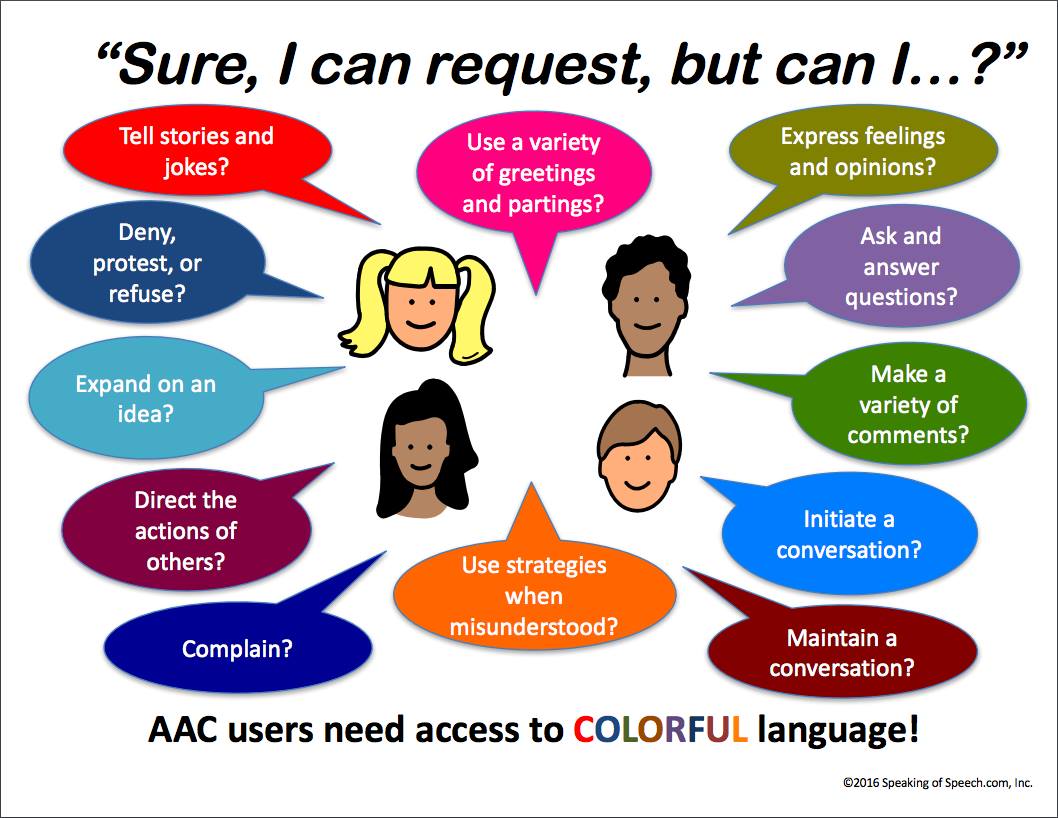 This group is for those who work with and evaluate individuals for AAC. The purpose of this group is to be able to discuss with other professionals anything related to AAC and share useful information. Please add others. Thanks!
This group is for those who work with and evaluate individuals for AAC. The purpose of this group is to be able to discuss with other professionals anything related to AAC and share useful information. Please add others. Thanks!
QIAT
 The QIAT Community is a nationwide grassroots group that includes hundreds of individuals who provide input into the ongoing process of identifying, disseminating, and implementing a set of widely applicable Quality Indicators for Assistive Technology Services in school settings that can be used as a tool.
The QIAT Community is a nationwide grassroots group that includes hundreds of individuals who provide input into the ongoing process of identifying, disseminating, and implementing a set of widely applicable Quality Indicators for Assistive Technology Services in school settings that can be used as a tool.
Weave Chat AAC Community
 The Weave Chat AAC community page is a safe and inclusive space to share ideas, ask questions, and make suggestions. This group was created for the purpose of uniting users of AAC, especially those who use Weave Chat AAC - whether it be the app version, the lite-tech versions, or any combination there of.
The Weave Chat AAC community page is a safe and inclusive space to share ideas, ask questions, and make suggestions. This group was created for the purpose of uniting users of AAC, especially those who use Weave Chat AAC - whether it be the app version, the lite-tech versions, or any combination there of.
AAC through Motivate...
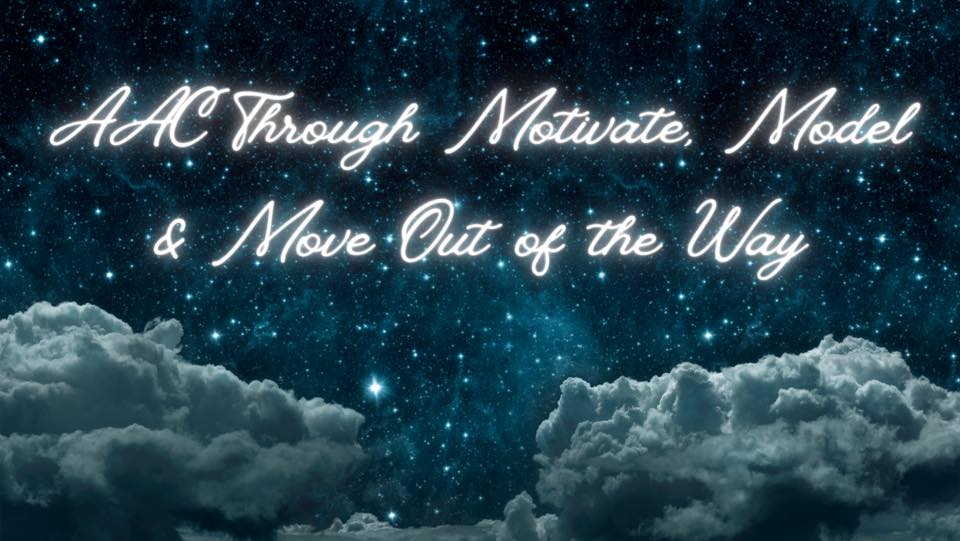 AAC through Motivate, Model, Move Out of the Way - This group is for those who believe in robust AAC for all and using Aided Language Stimulation and other ethical and scientifically based methods of promoting independent and generative communication in all those who do not speak or are not generally understood.
The goal of this group is to share how to use motivating activities and interactions, modeling and fading supports to increase independence to support AAC users in becoming competent communicators. This group is for everyone regardless of where they are in their AAC journey and what robust communication system is being used.
AAC through Motivate, Model, Move Out of the Way - This group is for those who believe in robust AAC for all and using Aided Language Stimulation and other ethical and scientifically based methods of promoting independent and generative communication in all those who do not speak or are not generally understood.
The goal of this group is to share how to use motivating activities and interactions, modeling and fading supports to increase independence to support AAC users in becoming competent communicators. This group is for everyone regardless of where they are in their AAC journey and what robust communication system is being used.
Smartbox Community
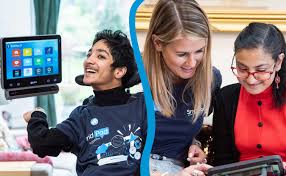 Welcome to the Smartbox Community! This is a place for our users, their families and professionals to share ideas, ask questions and chat with members of the Smartbox team. We create AAC solutions to help people communicate and live more independently, with resources that can be used with any type of alternative access.
Welcome to the Smartbox Community! This is a place for our users, their families and professionals to share ideas, ask questions and chat with members of the Smartbox team. We create AAC solutions to help people communicate and live more independently, with resources that can be used with any type of alternative access.
 AAC Podcast/Feed of the Year
AAC Podcast/Feed of the Year
Awe and Wonder
 Are you losing the human connection in the midst of data collection? Join Brenda and Sarah as they talk with inspirational people who create awe and wonder in unique ways. “Wonder inspires the wish to understand; awe inspires the wish to let shine, to acknowledge and to unite.” Ulrich Weger & Johannes Wagemann (sourced from Atlas of the Heart by Brene Brown) Participants will hear first hand accounts from people supporting students with complex needs. Assistive Technology, Augmentative Alternative Communication (AAC) and IEP goals are discussed, but human connection is highlighted throughout this engaging series.
Are you losing the human connection in the midst of data collection? Join Brenda and Sarah as they talk with inspirational people who create awe and wonder in unique ways. “Wonder inspires the wish to understand; awe inspires the wish to let shine, to acknowledge and to unite.” Ulrich Weger & Johannes Wagemann (sourced from Atlas of the Heart by Brene Brown) Participants will hear first hand accounts from people supporting students with complex needs. Assistive Technology, Augmentative Alternative Communication (AAC) and IEP goals are discussed, but human connection is highlighted throughout this engaging series.
ASHA Voices
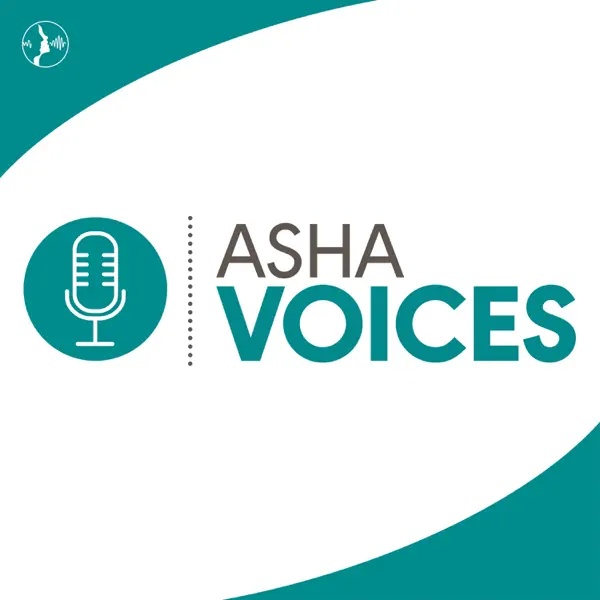 A biweekly podcast focused on the issues that matter in the speech-language-hearing world, ASHA Voices is the sound of ASHA. Aimed at a diverse segment of ASHA’s audience and membership, the award-winning ASHA Voices promotes interdisciplinary conversation among prominent and knowledgeable professionals. ASHA Voices is a quick-moving program with a conversational tone, which features panel discussions, one-on-one interviews, and opportunities for member participation.
A biweekly podcast focused on the issues that matter in the speech-language-hearing world, ASHA Voices is the sound of ASHA. Aimed at a diverse segment of ASHA’s audience and membership, the award-winning ASHA Voices promotes interdisciplinary conversation among prominent and knowledgeable professionals. ASHA Voices is a quick-moving program with a conversational tone, which features panel discussions, one-on-one interviews, and opportunities for member participation.
AAC Chats
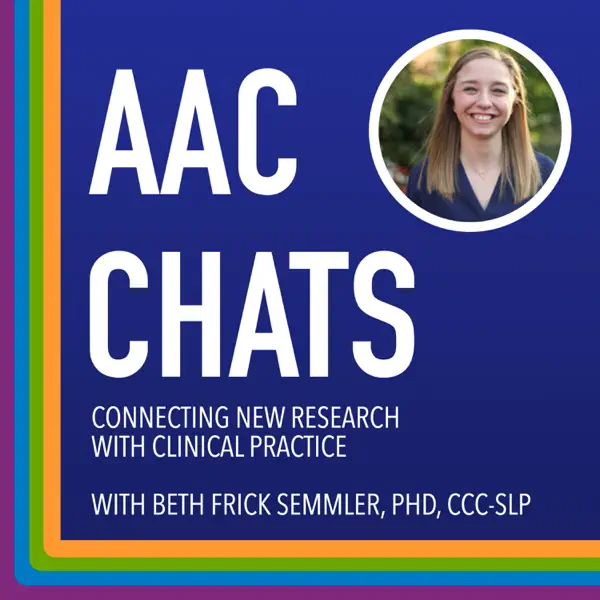 The professional resource podcast that aims to break down current research in augmentative and alternative communication and bridge the gap between research to practice by providing context to critical research, describing clinical applications, and directing SLPs to resources to learn more.
The professional resource podcast that aims to break down current research in augmentative and alternative communication and bridge the gap between research to practice by providing context to critical research, describing clinical applications, and directing SLPs to resources to learn more.
GrowingWithAAC
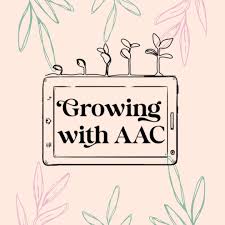 @growingwithaac on Instagram. Created by two SLPs, who specialize in AAC & advocate for neurodiversity-affirming practices!
🌿AAC resources, materials, how-to videos, & trainings.
@growingwithaac on Instagram. Created by two SLPs, who specialize in AAC & advocate for neurodiversity-affirming practices!
🌿AAC resources, materials, how-to videos, & trainings.
BeautifulSpeechLife
 [I]’m Anne. A heart-centered SLP (speech language pathologist), educator and creator dedicated to helping you take the fear out of AAC. This website is devoted to sharing ideas, tips and resources that will help you not only SLP Like a Boss, but AAC like a Boss too. We’ll put the fun back in functional communication for the kids you work with (and for you too).
[I]’m Anne. A heart-centered SLP (speech language pathologist), educator and creator dedicated to helping you take the fear out of AAC. This website is devoted to sharing ideas, tips and resources that will help you not only SLP Like a Boss, but AAC like a Boss too. We’ll put the fun back in functional communication for the kids you work with (and for you too).
 AAC Training Resource of the Year
AAC Training Resource of the Year
Stepping Into AAC
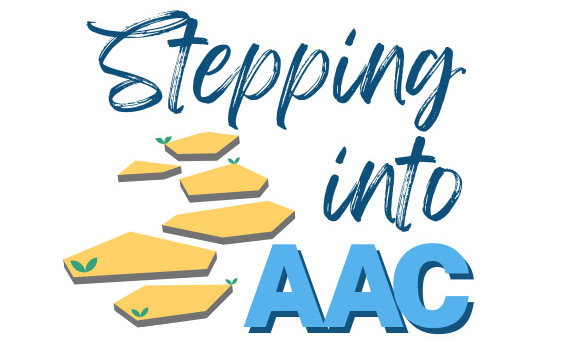 Despite the growing amount of AAC information that is available, parents of children with very limited language struggle to support their children’s communicative development. Stepping Into AAC is a program to support your individual’s communication journey.
Stepping Into AAC
Introduces you to Augmentative/Alternative Communication (AAC)
Guides you through the early months of using new communication tools and strategies
Offers resources to engage school teams and other caregivers
The program is divided into 20 parts with the intention to complete one part a week. There are activities, resources and videos to guide you along the way. Our hope is that you find support and inspiration whether you are just getting started with AAC, seeking momentum or looking to learn more about AAC.
Despite the growing amount of AAC information that is available, parents of children with very limited language struggle to support their children’s communicative development. Stepping Into AAC is a program to support your individual’s communication journey.
Stepping Into AAC
Introduces you to Augmentative/Alternative Communication (AAC)
Guides you through the early months of using new communication tools and strategies
Offers resources to engage school teams and other caregivers
The program is divided into 20 parts with the intention to complete one part a week. There are activities, resources and videos to guide you along the way. Our hope is that you find support and inspiration whether you are just getting started with AAC, seeking momentum or looking to learn more about AAC.
GrowingWithAAC
 @growingwithaac on Instagram. Created by two SLPs, who specialize in AAC & advocate for neurodiversity-affirming practices!
🌿AAC resources, materials, how-to videos, & trainings.
@growingwithaac on Instagram. Created by two SLPs, who specialize in AAC & advocate for neurodiversity-affirming practices!
🌿AAC resources, materials, how-to videos, & trainings.
PrAACtical AAC
 PrAACtical AAC supports a community of professionals and families who are determined to improve the communication and literacy abilities of people with significant communication difficulties. It was founded in 2011 by two SLP professors, Carole Zangari and the late Robin Parker, around a shared passion for AAC.
PrAACtical AAC supports a community of professionals and families who are determined to improve the communication and literacy abilities of people with significant communication difficulties. It was founded in 2011 by two SLP professors, Carole Zangari and the late Robin Parker, around a shared passion for AAC.
TD Learning Hub
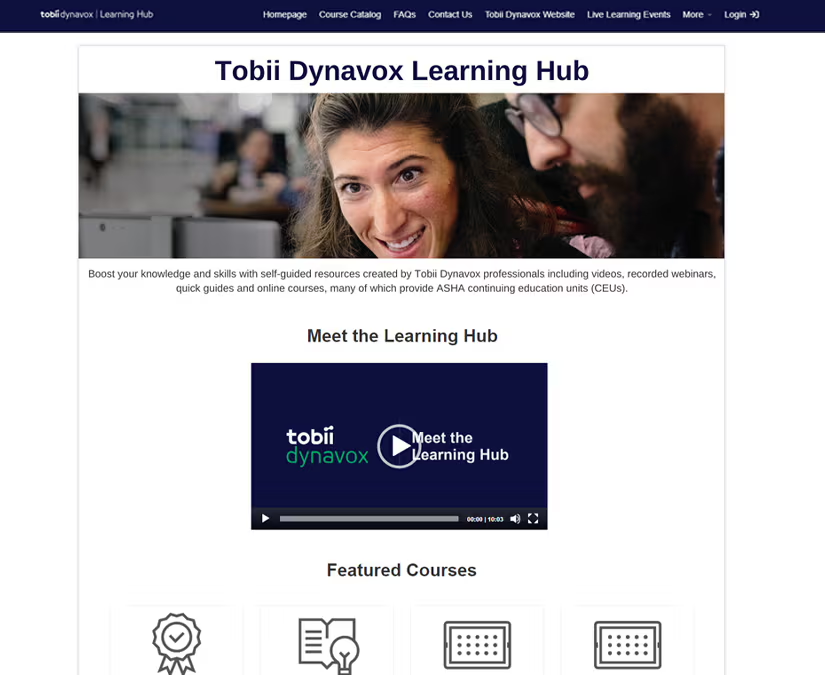 Boost your knowledge with self-guided resources created by Tobii Dynavox professionals including videos, recorded webinars, quick guides, and online courses, many of which provide ASHA continuing education credits (CEUs).
Boost your knowledge with self-guided resources created by Tobii Dynavox professionals including videos, recorded webinars, quick guides, and online courses, many of which provide ASHA continuing education credits (CEUs).
AAC Language Lab
 The AAC Language Lab offers real-life solutions in support of language development. Explore language stages and interactive materials designed for Speech Language Pathologists (SLPs), Educators and Parents. An annual subscription provides full access to all materials including guided lesson plans, an activities section, a language screener, implementation tips and more.
The AAC Language Lab offers real-life solutions in support of language development. Explore language stages and interactive materials designed for Speech Language Pathologists (SLPs), Educators and Parents. An annual subscription provides full access to all materials including guided lesson plans, an activities section, a language screener, implementation tips and more.
 AAC Community Site of the Year
AAC Community Site of the Year
Communication FIRST
 Communication FIRST is the only nonprofit organization dedicated to protecting and advancing the civil rights of the more than 5 million children and adults in the United States who, due to disability or other condition, cannot rely on speech alone to be heard and understood. Our mission is to protect and advance the rights, autonomy, opportunity, and dignity of people with speech-related disabilities through public engagement, policy and practice reform, and systemic advocacy.
Communication FIRST is the only nonprofit organization dedicated to protecting and advancing the civil rights of the more than 5 million children and adults in the United States who, due to disability or other condition, cannot rely on speech alone to be heard and understood. Our mission is to protect and advance the rights, autonomy, opportunity, and dignity of people with speech-related disabilities through public engagement, policy and practice reform, and systemic advocacy.
NWACS
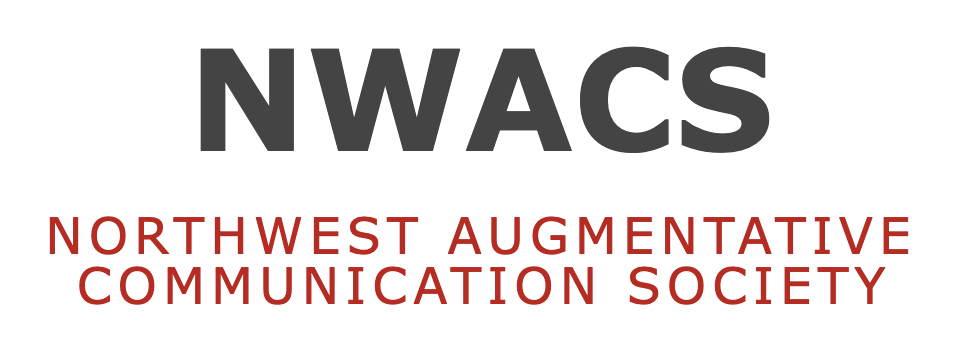 Welcome to NWACS! The Northwest Augmentative Communication Society (NWACS) is a nonprofit organization. Dr. David Beukelman helped form what is now known as NWACS in the 1970s. We run completely on volunteer power. Our focus is on educating and raising awareness about augmentative and alternative communication (AAC).
Welcome to NWACS! The Northwest Augmentative Communication Society (NWACS) is a nonprofit organization. Dr. David Beukelman helped form what is now known as NWACS in the 1970s. We run completely on volunteer power. Our focus is on educating and raising awareness about augmentative and alternative communication (AAC).
AAC Club - CSUF
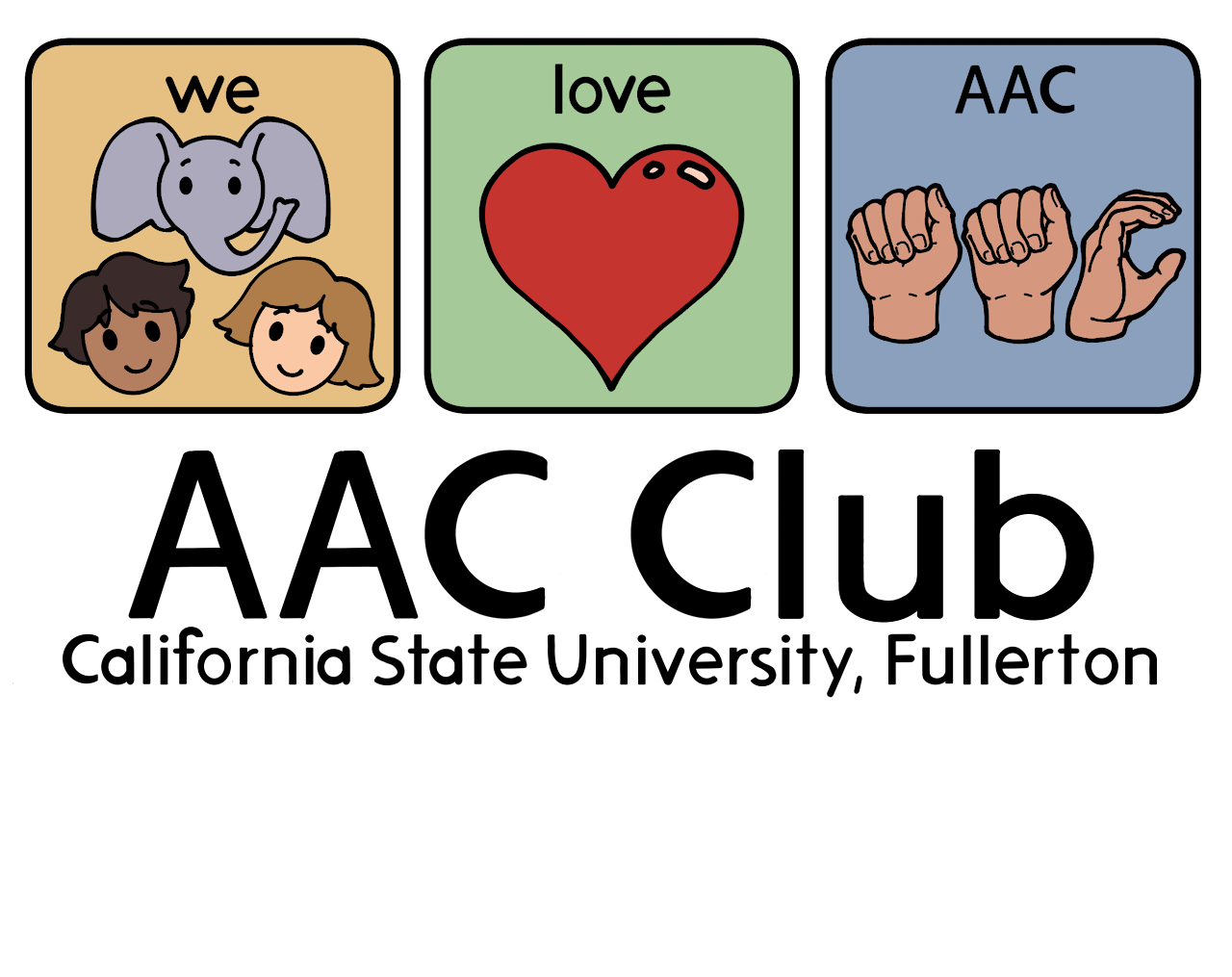 The AAC Club was founded in the spring of 2021 by a group of Communication Sciences and Disorders majors who were passionate about learning how to serve individuals who relied on AAC for effective communication. The founding board, recognizing the continuing evolution, complexity, and importance of AAC was dissatisfied by the lack of exposure undergraduate students had to the field. Inspired by a desire to learn more, educate others, and support other AAC-related organizations the students founded the AAC Club with the help of Dr. Lisa Erwin-Davidson.
The AAC Club was founded in the spring of 2021 by a group of Communication Sciences and Disorders majors who were passionate about learning how to serve individuals who relied on AAC for effective communication. The founding board, recognizing the continuing evolution, complexity, and importance of AAC was dissatisfied by the lack of exposure undergraduate students had to the field. Inspired by a desire to learn more, educate others, and support other AAC-related organizations the students founded the AAC Club with the help of Dr. Lisa Erwin-Davidson.
OMazing Kids
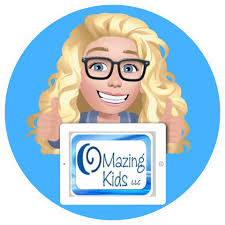 Angela Moorad, MS, CCC-SLP. Over 35 years experience in AAC. OMazing Kids AAC and app consulting. Creator of several AAC Feature Matching resources (https://omazingkidsllc.com/omazing-kids-aac-resource-links/). Includes info about unique features to support Gestalt Language Processors
Angela Moorad, MS, CCC-SLP. Over 35 years experience in AAC. OMazing Kids AAC and app consulting. Creator of several AAC Feature Matching resources (https://omazingkidsllc.com/omazing-kids-aac-resource-links/). Includes info about unique features to support Gestalt Language Processors
AACcessible
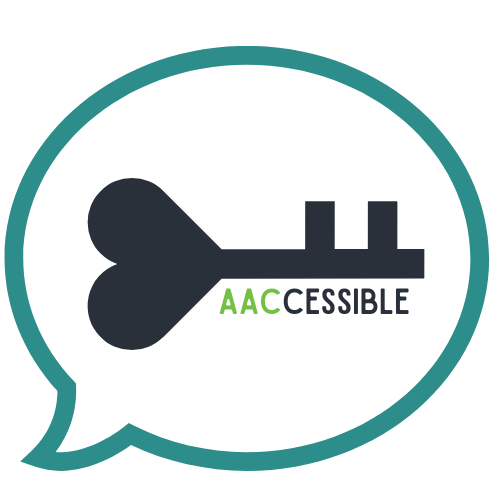 AACcessible is a 501(c)(3), charitable organization, driven by volunteer and donation power. AACcessible was founded to bring awareness and action to the AAC access barriers that remain for communicators, partners, and families.
AACcessible is a 501(c)(3), charitable organization, driven by volunteer and donation power. AACcessible was founded to bring awareness and action to the AAC access barriers that remain for communicators, partners, and families.
 Printable AAC Tool of the Year
Printable AAC Tool of the Year
LessonPix
 LessonPix is an easy-to-use online resource that allows users to create various customized learning materials.
LessonPix is an easy-to-use online resource that allows users to create various customized learning materials.
Global Symbols
 Global Symbols has a huge collection of high-quality symbols you can use for communication. Search our symbols, download and use them.
With our free Board Builder and Symbol Creator, you can quickly create boards of symbols to help communication. Create boards for day-to-day activities, special occasions, special topics such as games or mealtimes etc. The templates are easy to use for making information sheets or any curtomised designs you want to create.
Global Symbols has a huge collection of high-quality symbols you can use for communication. Search our symbols, download and use them.
With our free Board Builder and Symbol Creator, you can quickly create boards of symbols to help communication. Create boards for day-to-day activities, special occasions, special topics such as games or mealtimes etc. The templates are easy to use for making information sheets or any curtomised designs you want to create.
BoardMaker
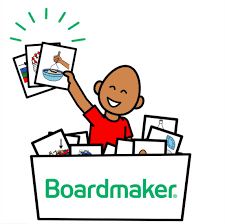 Boardmaker is a complete special education platform that supports education, communication, access and social and emotional needs of more than six million students in 51 countries. At home, at school, or in a clinical practice, Boardmaker drives your student’s success.
Boardmaker is a complete special education platform that supports education, communication, access and social and emotional needs of more than six million students in 51 countries. At home, at school, or in a clinical practice, Boardmaker drives your student’s success.
SymbolStix PRIME
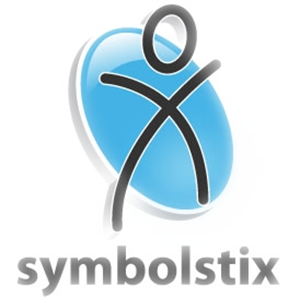 SymbolStix PRIME, the evidence‑based symbol communication tool, provides that lifeline, ensuring everyone has access to learning, language and self‑expression.
SymbolStix PRIME, the evidence‑based symbol communication tool, provides that lifeline, ensuring everyone has access to learning, language and self‑expression.
Smarty Symbols
 At the heart of our software lies an enormous and continually expanding library, brimming with over 70,000 contemporary images that resonate with children of all ages. With such a diverse and expansive selection at their fingertips, educators and families can drop and drop them into a template to create a myriad of resources, from lessons to games, that make learning fun, interactive, and impactful.
At the heart of our software lies an enormous and continually expanding library, brimming with over 70,000 contemporary images that resonate with children of all ages. With such a diverse and expansive selection at their fingertips, educators and families can drop and drop them into a template to create a myriad of resources, from lessons to games, that make learning fun, interactive, and impactful.
 AAC Assessment Tool of the Year
AAC Assessment Tool of the Year
Communication Matrix
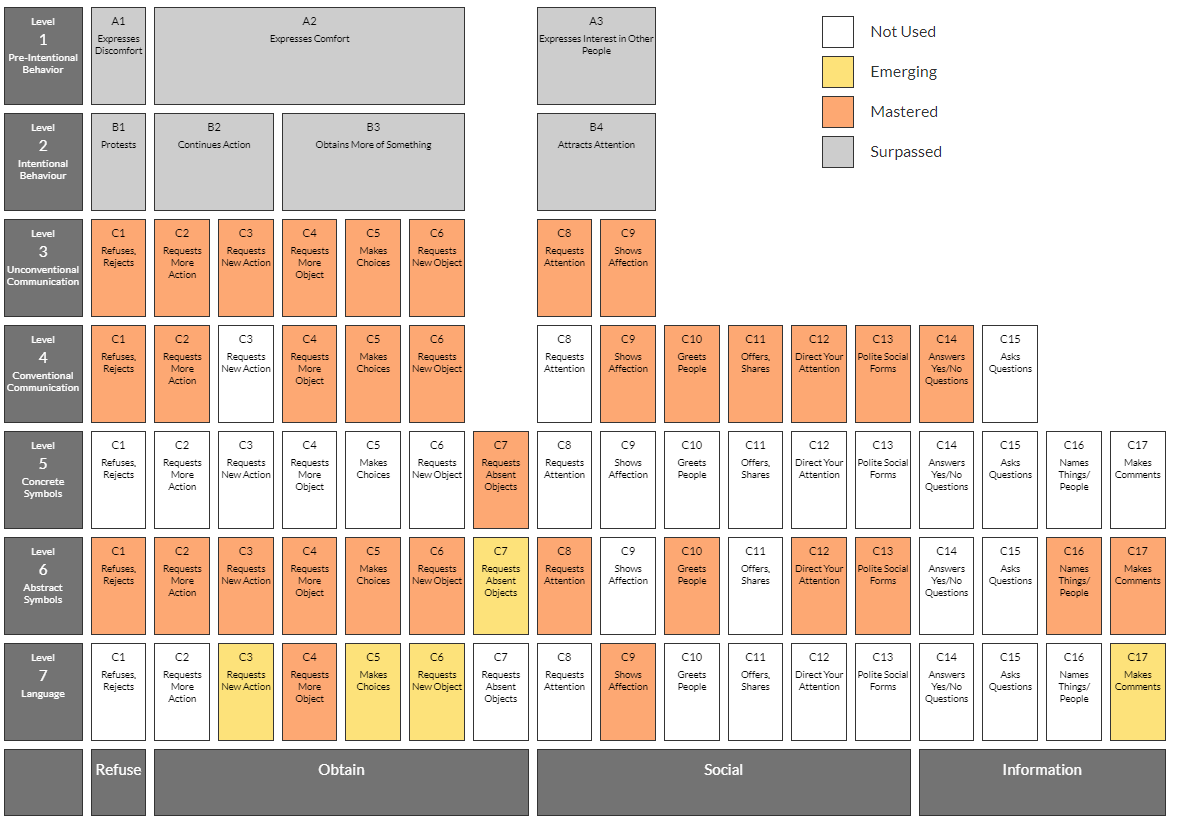 The Communication Matrix is an online assessment tool created to help professionals and family members support people with severe communication disorders in their journey toward greater self-expression. The Matrix guides you through a series of questions to answer based on your observations and experiences with the individual. It lets you track and understand progress at a glance.
The Communication Matrix is an online assessment tool created to help professionals and family members support people with severe communication disorders in their journey toward greater self-expression. The Matrix guides you through a series of questions to answer based on your observations and experiences with the individual. It lets you track and understand progress at a glance.
DAGG-3
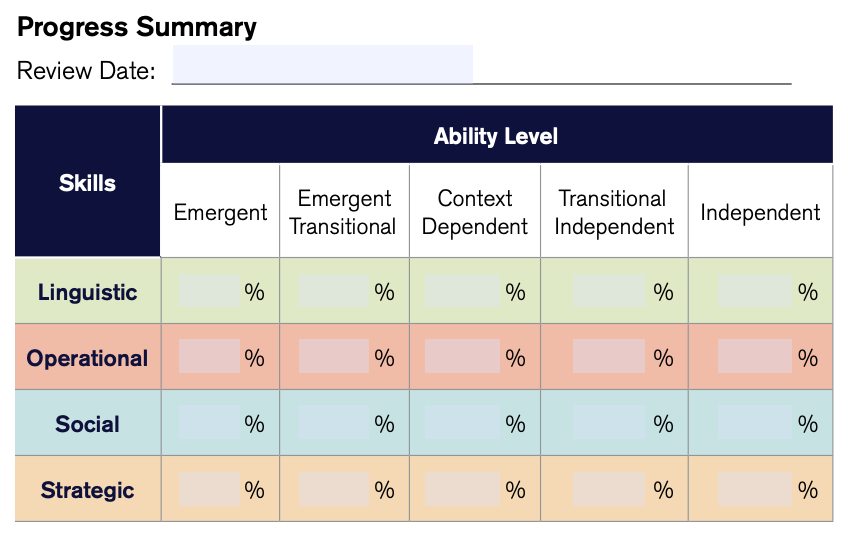 Design an intervention plan for those using augmentative and alternative communication with DAGG-3, short for Dynamic AAC Goals Grid (edition 3). This tool helps speech-language therapists collaborate with their patients’ support team (such as educators and family members) to assess and progress their current communication abilities. It then guides SLTs in choosing and tracking appropriate AAC goals. DAGG-3 can be used for all ability levels – from early learners to more advanced communicators. DAGG-3 is available free of charge.
Design an intervention plan for those using augmentative and alternative communication with DAGG-3, short for Dynamic AAC Goals Grid (edition 3). This tool helps speech-language therapists collaborate with their patients’ support team (such as educators and family members) to assess and progress their current communication abilities. It then guides SLTs in choosing and tracking appropriate AAC goals. DAGG-3 can be used for all ability levels – from early learners to more advanced communicators. DAGG-3 is available free of charge.
AAC Genie
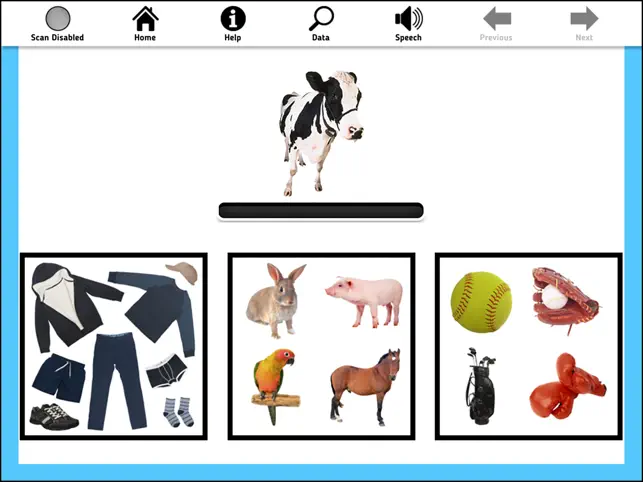 AAC Evaluation Genie is a powerful and intuitive app designed specifically for speech-language pathologists, occupational therapists, special educators, and assistive technology specialists. Developed by a certified speech-language pathologist, this innovative tool transforms the way professionals assess and evaluate augmentative and alternative communication (AAC) needs. AAC Evaluation Genie is a clinical tool intended to assist professionals in identifying skill areas related to language representation methods commonly found on augmentative communication systems. The purpose of AAC Evaluation Genie is not to identify a particular speech-generating device, but to build a framework for selecting an appropriate augmentative communication system for ongoing evaluation and/or device trial.
AAC Evaluation Genie is a powerful and intuitive app designed specifically for speech-language pathologists, occupational therapists, special educators, and assistive technology specialists. Developed by a certified speech-language pathologist, this innovative tool transforms the way professionals assess and evaluate augmentative and alternative communication (AAC) needs. AAC Evaluation Genie is a clinical tool intended to assist professionals in identifying skill areas related to language representation methods commonly found on augmentative communication systems. The purpose of AAC Evaluation Genie is not to identify a particular speech-generating device, but to build a framework for selecting an appropriate augmentative communication system for ongoing evaluation and/or device trial.
SETT
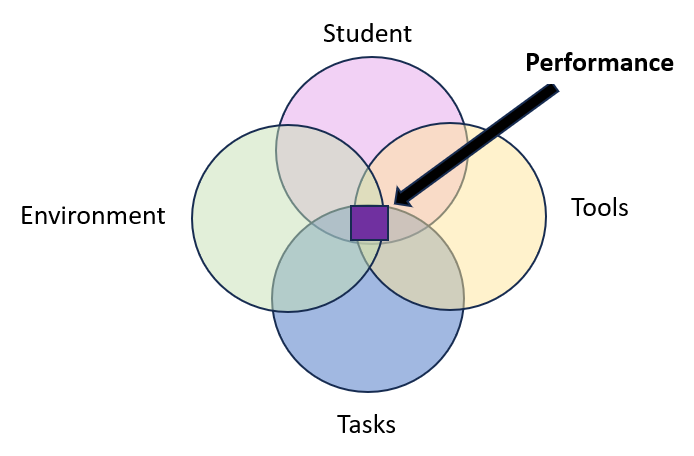 The premise of the SETT Framework is identifying the characteristics of a Student, the Environments in which the student learns and grows, and Tasks required to be an active learner in those environments before trying to identify a system of Tools that enables the student to actively engage in the tasks in the environments. A critical feature of successfully applying the SETT Framework is a shared understanding across the educational team, the student, and the family when it comes to the "who" (student’s characteristics), the "where" (learning environment characteristics), and the "what" (tasks that a student needs to be able to do).
The premise of the SETT Framework is identifying the characteristics of a Student, the Environments in which the student learns and grows, and Tasks required to be an active learner in those environments before trying to identify a system of Tools that enables the student to actively engage in the tasks in the environments. A critical feature of successfully applying the SETT Framework is a shared understanding across the educational team, the student, and the family when it comes to the "who" (student’s characteristics), the "where" (learning environment characteristics), and the "what" (tasks that a student needs to be able to do).
FCP-R
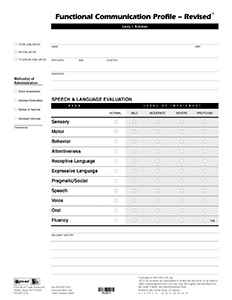 The FCP-R lets you account for some of the unique aspects of communication and the diversity among individuals with developmental and acquired delays. It addresses all communication possibilities and is not limited to oral language expression. Test items help fulfill the standards in state and federal regulations in the United States. The test assesses students' language-based responses to portrayed, peer-to-peer situations which is unlike other tests which rely on observation forms.
The FCP-R lets you account for some of the unique aspects of communication and the diversity among individuals with developmental and acquired delays. It addresses all communication possibilities and is not limited to oral language expression. Test items help fulfill the standards in state and federal regulations in the United States. The test assesses students' language-based responses to portrayed, peer-to-peer situations which is unlike other tests which rely on observation forms.
 Lite-Tech AAC Product of the Year
Lite-Tech AAC Product of the Year
Flip Books by PRC-Saltillo
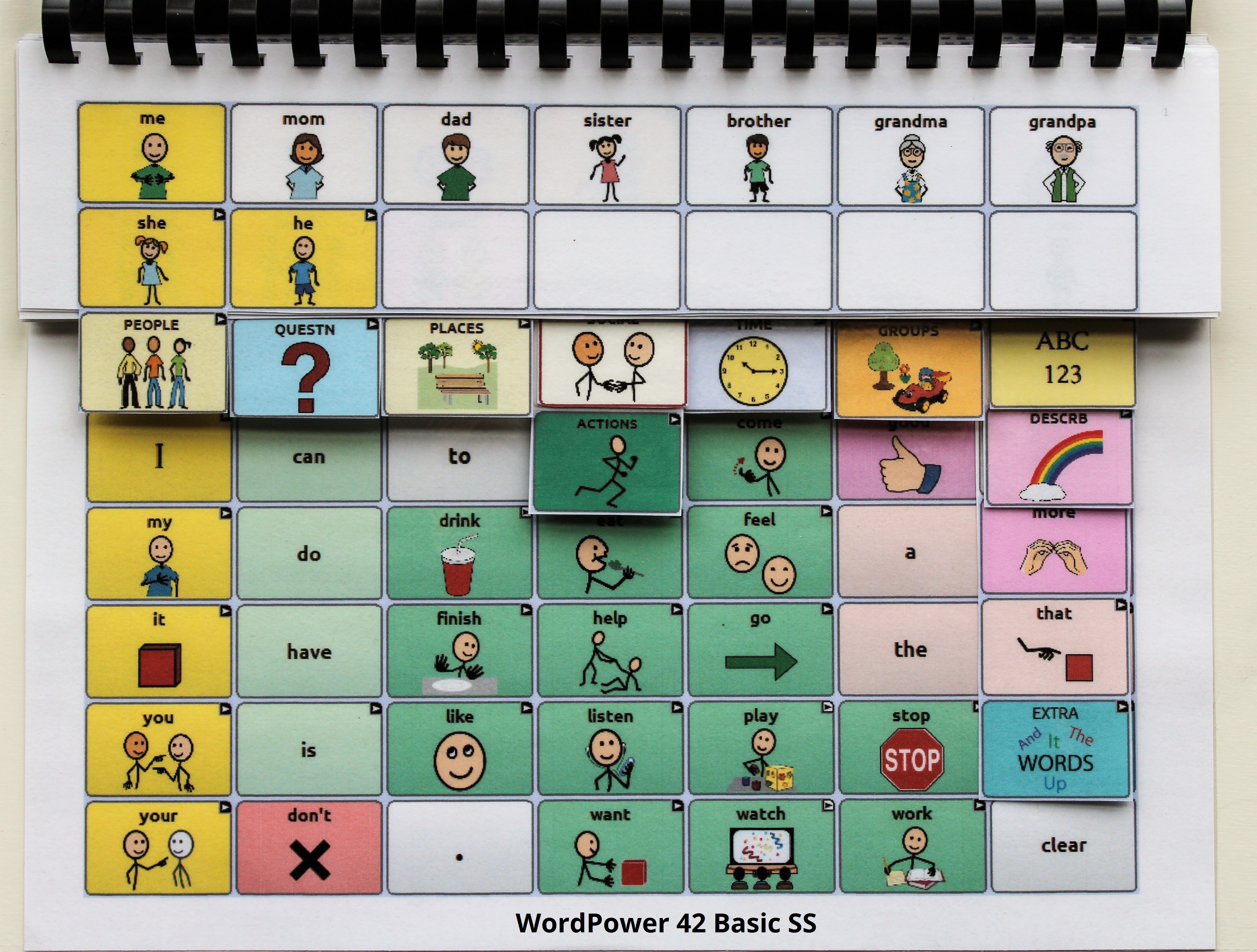 Where could one use a lite-tech option? Everywhere! Lite-tech AAC supplies access to high-frequency and versatile vocabulary when the activity may not be conducive to having a device present, when the device is not available, or for modeling. Available to support Unity® and WordPower®, the free, pre-made flip book downloads from the AAC Language Lab® include instructions on how to make them. These options are designed with flips to access more vocabulary within categories, similar to the way you would navigate the vocabulary on a high-tech system.
Where could one use a lite-tech option? Everywhere! Lite-tech AAC supplies access to high-frequency and versatile vocabulary when the activity may not be conducive to having a device present, when the device is not available, or for modeling. Available to support Unity® and WordPower®, the free, pre-made flip book downloads from the AAC Language Lab® include instructions on how to make them. These options are designed with flips to access more vocabulary within categories, similar to the way you would navigate the vocabulary on a high-tech system.
PicSeePal
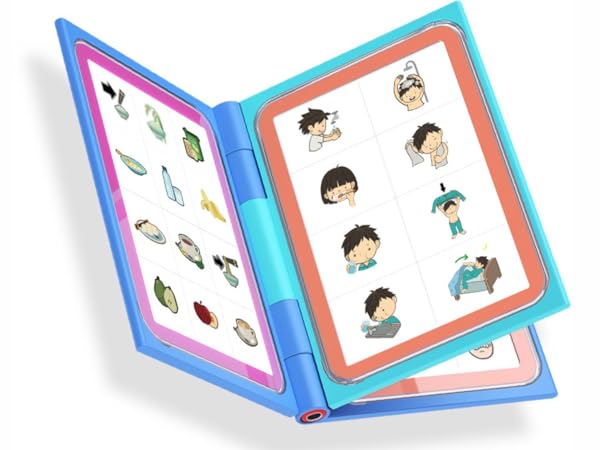 The world's first AAC housing that is lightweight, portable, customizable, splash proof, modular and easy to use. If you are looking for a light-tech solution that you can take anywhere and empowers users of AAC, you're in the right place!
The world's first AAC housing that is lightweight, portable, customizable, splash proof, modular and easy to use. If you are looking for a light-tech solution that you can take anywhere and empowers users of AAC, you're in the right place!
Ace Centre Printables
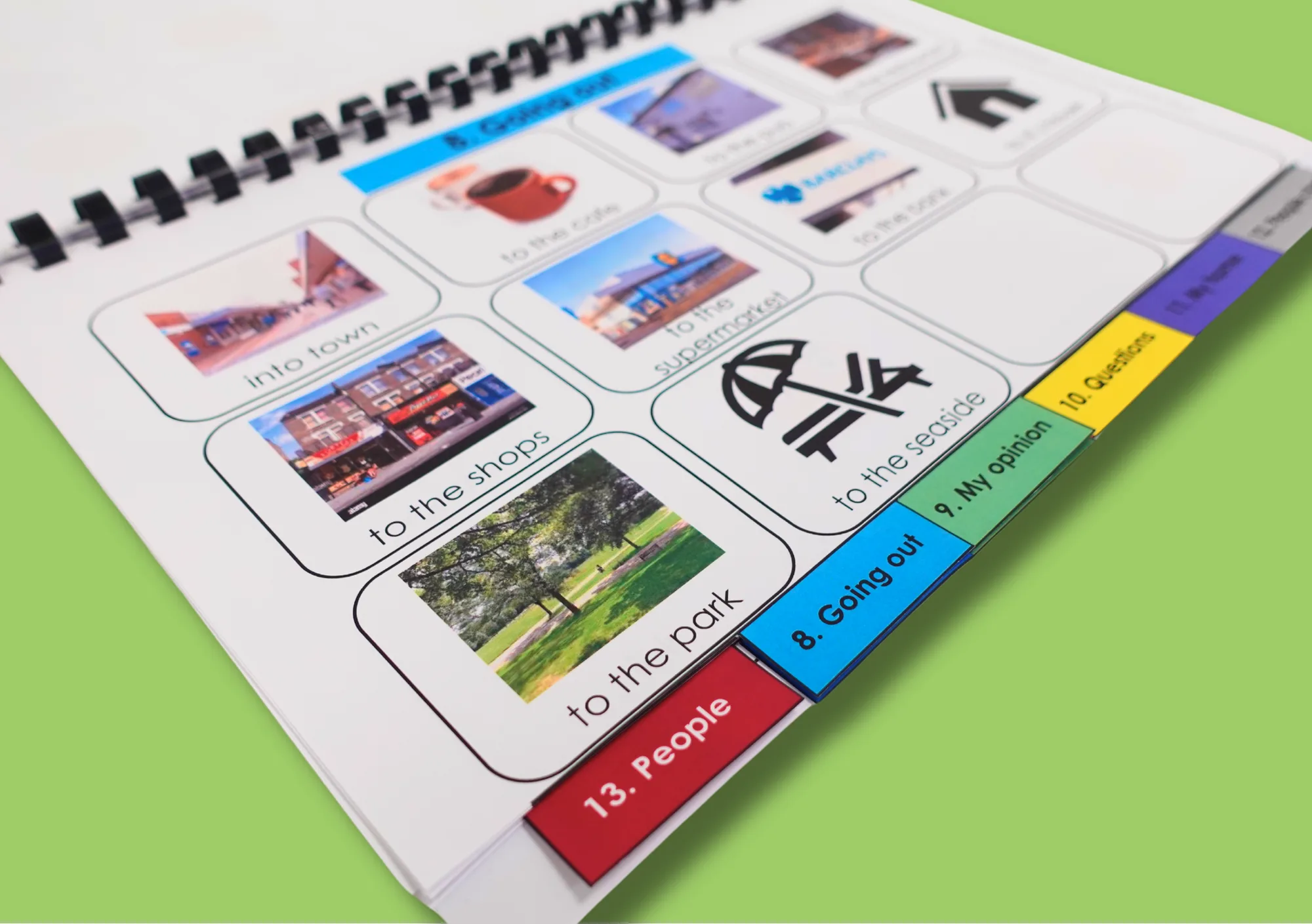 Discover a wide range of resources, publications and downloads to support use and implementation of AAC and AT. Includes alphabet charts and books, seasonal
resources, symbol charts, etc. All free.
Discover a wide range of resources, publications and downloads to support use and implementation of AAC and AT. Includes alphabet charts and books, seasonal
resources, symbol charts, etc. All free.
PODD Books
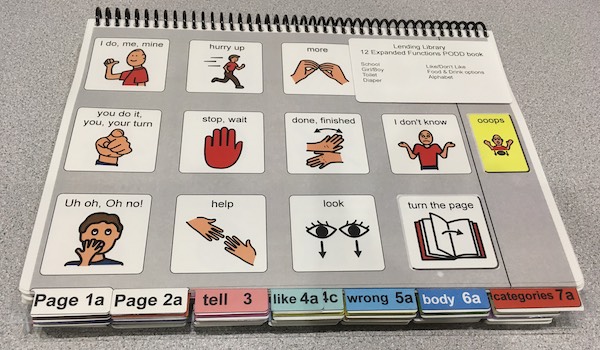 Pragmatic Organisation Dynamic Display (PODD) is normally a book or device that contains symbols and words to support communication between people with complex communication needs and their communication partners, whether that’s carers, family, friends or support workers.
Pragmatic Organisation Dynamic Display (PODD) is normally a book or device that contains symbols and words to support communication between people with complex communication needs and their communication partners, whether that’s carers, family, friends or support workers.
 Mid-Tech AAC Product of the Year
Mid-Tech AAC Product of the Year
QuickTalker
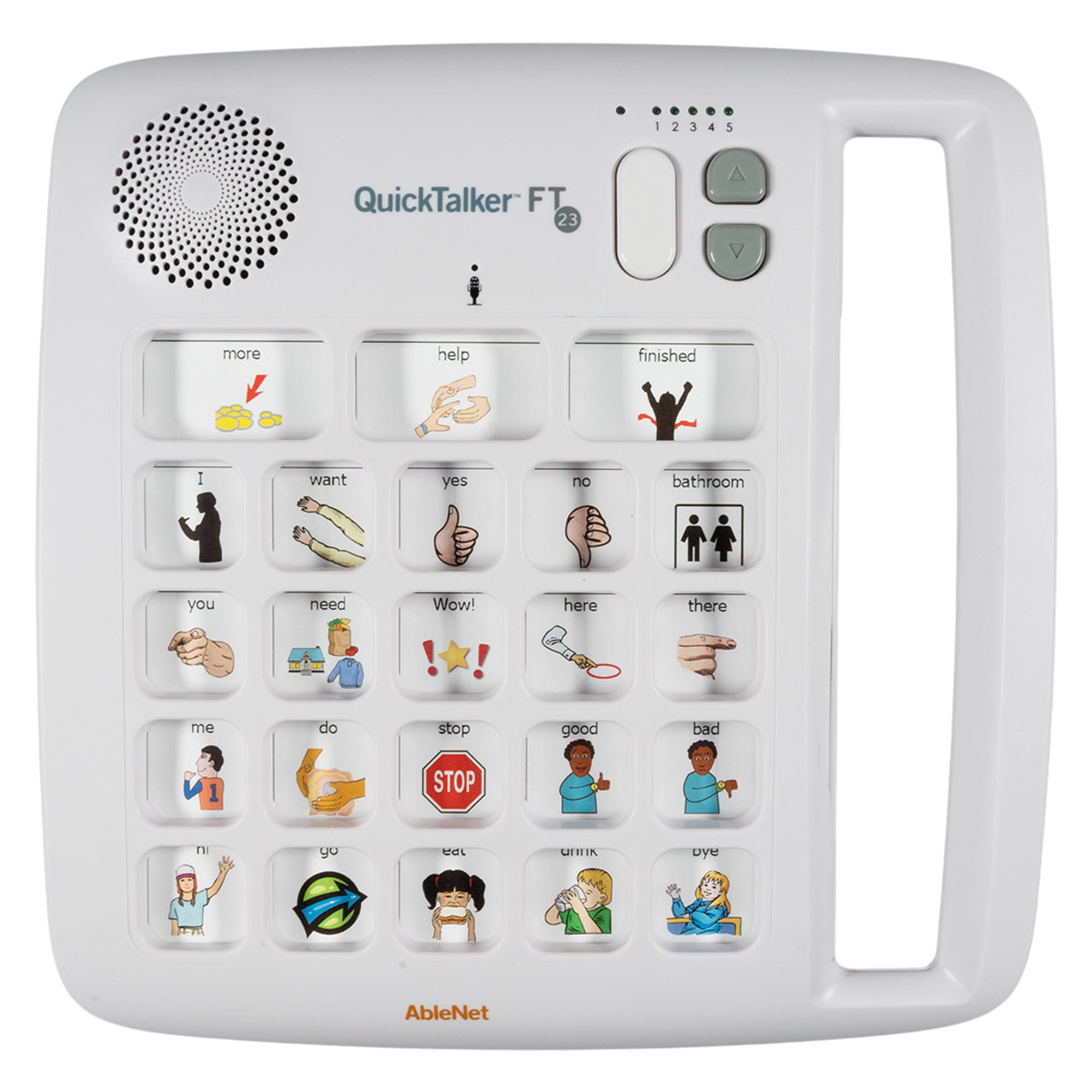 The QuickTalker FeatherTouch speech device provides multi-message communication that is highly portable, durable, and easy to use. The FeatherTouch membrane responds to the lightest touches and smallest fingers, and makes it easy for almost anyone to communicate. QuickTalker FeatherTouch 12 includes 48 unique messages available across five recording levels and provides an individual with robust communication options throughout the day.
The QuickTalker FeatherTouch speech device provides multi-message communication that is highly portable, durable, and easy to use. The FeatherTouch membrane responds to the lightest touches and smallest fingers, and makes it easy for almost anyone to communicate. QuickTalker FeatherTouch 12 includes 48 unique messages available across five recording levels and provides an individual with robust communication options throughout the day.
BigMack
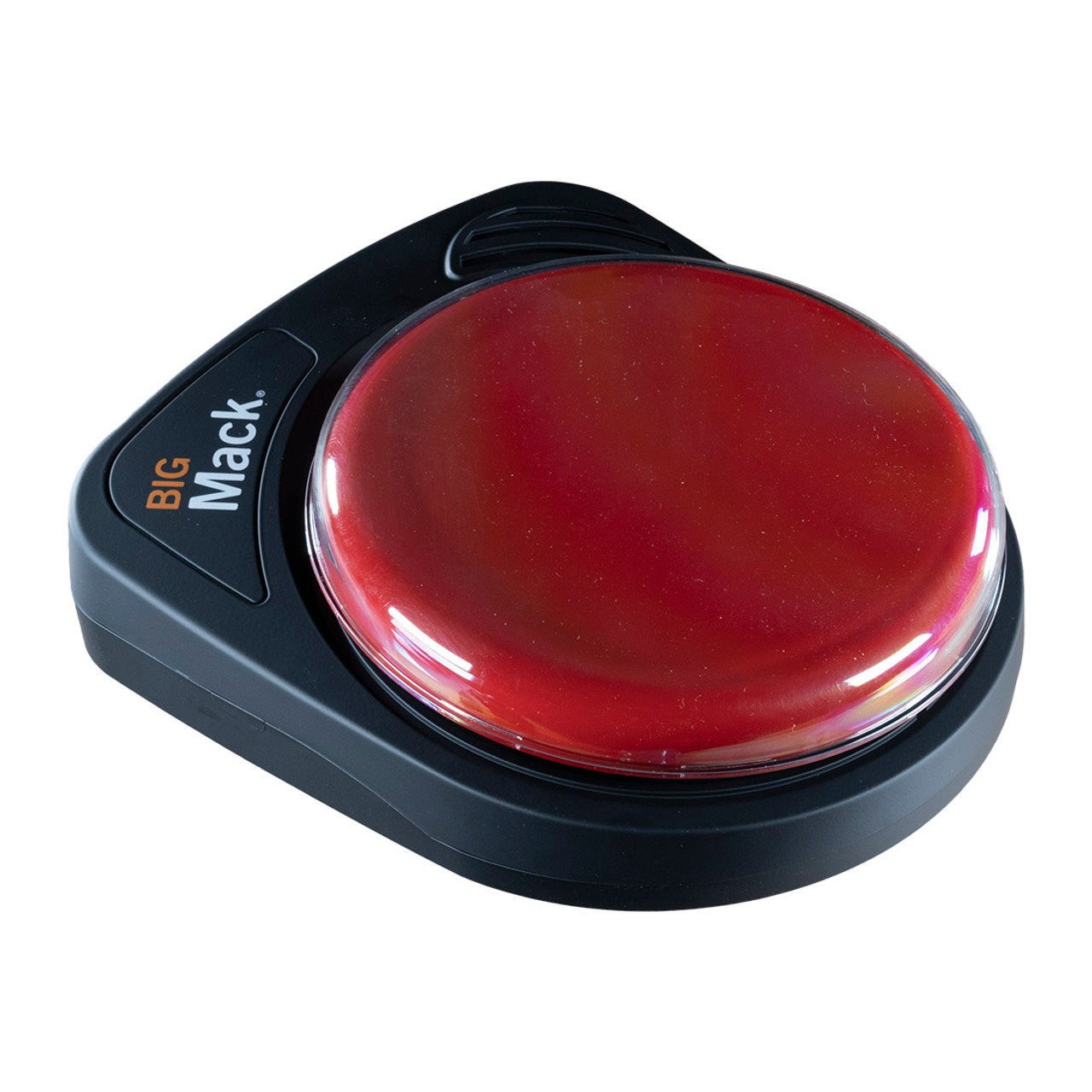 Start your communication journey with a BIGmack speech device. With a press of the large colored top, an individual can communicate a single message up to 2-minutes long. New messages are easily and quickly recorded to the BIGmack on the fly throughout the day to provide opportunities to communicate in almost any scenario.
Start your communication journey with a BIGmack speech device. With a press of the large colored top, an individual can communicate a single message up to 2-minutes long. New messages are easily and quickly recorded to the BIGmack on the fly throughout the day to provide opportunities to communicate in almost any scenario.
ProxTalker
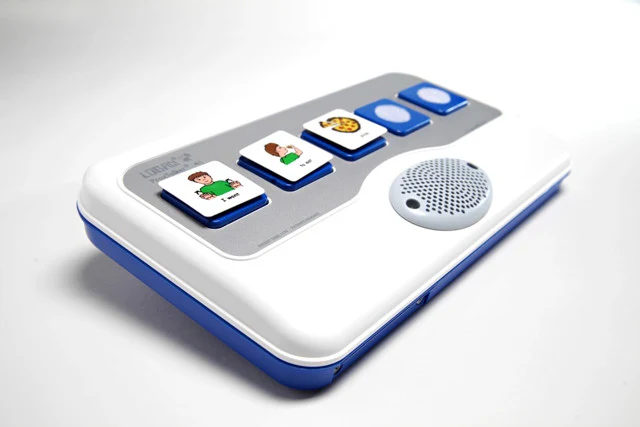 The Logan® ProxTalker® is the most advanced and adaptable recorded speech communication device available. It uses RFID (radio frequency identification) technology to enable independent verbal picture communication for non-verbal people of all ages. This technology allows you to simply place any photo, symbol, or object on a sound tag card and have a voice! To trigger voice output place your sound tag card on any one of the 5 buttons and push. Now silent picture users have easy access to voice output. Life changing!
The Logan® ProxTalker® is the most advanced and adaptable recorded speech communication device available. It uses RFID (radio frequency identification) technology to enable independent verbal picture communication for non-verbal people of all ages. This technology allows you to simply place any photo, symbol, or object on a sound tag card and have a voice! To trigger voice output place your sound tag card on any one of the 5 buttons and push. Now silent picture users have easy access to voice output. Life changing!
Go Talk
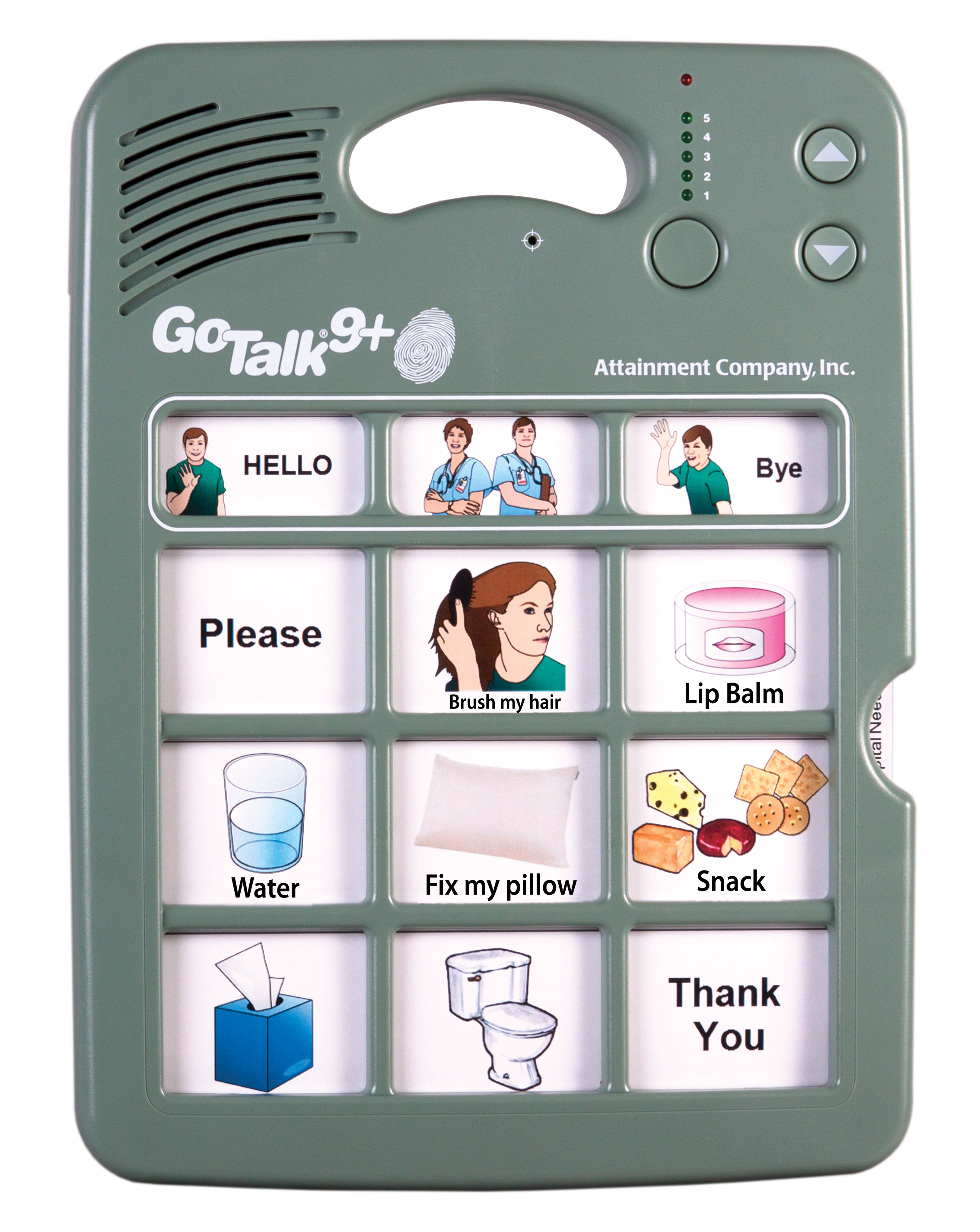 The GoTalk 9+ Lite Touch is a powerful, lightweight, and portable voice output communication device to support individuals with limited to no speech. Durable like all GoTalks and provides fantastic sound with volume control, easy sequential recording, quick level erase, built-in overlay storage, record lock, level lock and a 2-year warranty. Record and store up to 45 personal messages in five levels and 3 additional core buttons for frequently used words or phrases across levels. In addition to these classic GoTalk features the GoTalk Lite Touch device is five times easier for individuals to activate and communicate messages throughout the day.
The GoTalk 9+ Lite Touch is a powerful, lightweight, and portable voice output communication device to support individuals with limited to no speech. Durable like all GoTalks and provides fantastic sound with volume control, easy sequential recording, quick level erase, built-in overlay storage, record lock, level lock and a 2-year warranty. Record and store up to 45 personal messages in five levels and 3 additional core buttons for frequently used words or phrases across levels. In addition to these classic GoTalk features the GoTalk Lite Touch device is five times easier for individuals to activate and communicate messages throughout the day.
MegaBee
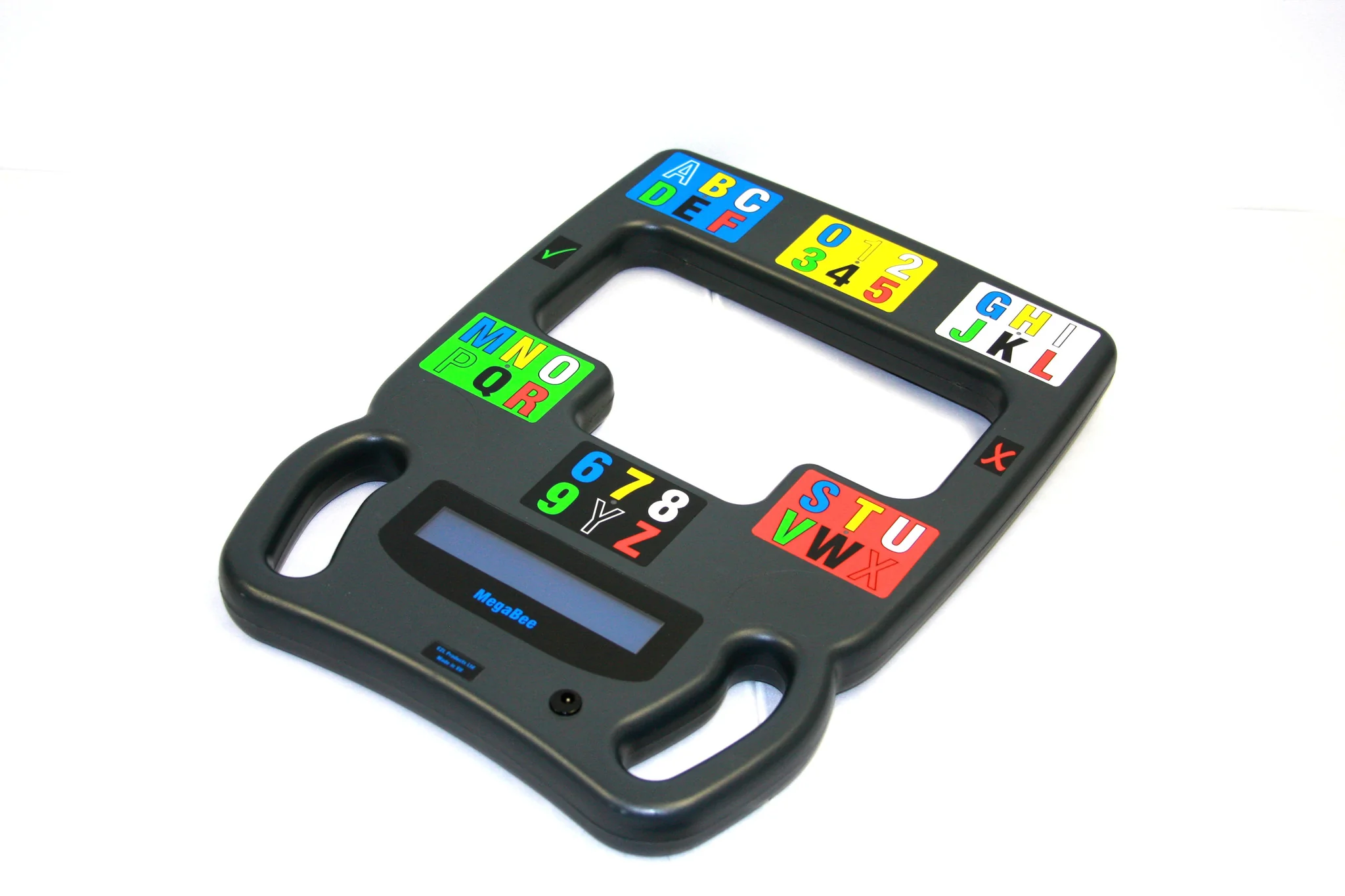 The MegaBee is an assisted communication tablet. An easy to use, low tech, eye pointing, rapidly deployed, convenient, frequent means of communication for people who have no speech. Ideal for people with a range of neurological conditions, acute and progressive.
The MegaBee is an assisted communication tablet. An easy to use, low tech, eye pointing, rapidly deployed, convenient, frequent means of communication for people who have no speech. Ideal for people with a range of neurological conditions, acute and progressive.
 Alternative Access Product of the Year
Alternative Access Product of the Year
Blue2 FT
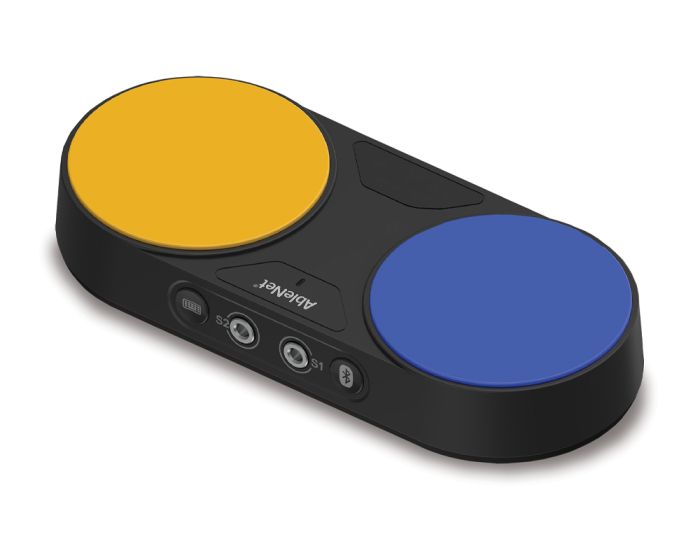 Go wireless with your switch access to a tablet, computer, mobile phone, or other devices with a Bluetooth connection. The Blue2 FT accessibility switch uses highly-sensitive proximity sensor technology for activation. Any time the user is near or touching the activation surfaces, the Blue2 FT accessibility switch will activate.
Go wireless with your switch access to a tablet, computer, mobile phone, or other devices with a Bluetooth connection. The Blue2 FT accessibility switch uses highly-sensitive proximity sensor technology for activation. Any time the user is near or touching the activation surfaces, the Blue2 FT accessibility switch will activate.
3D Printed Keyguards
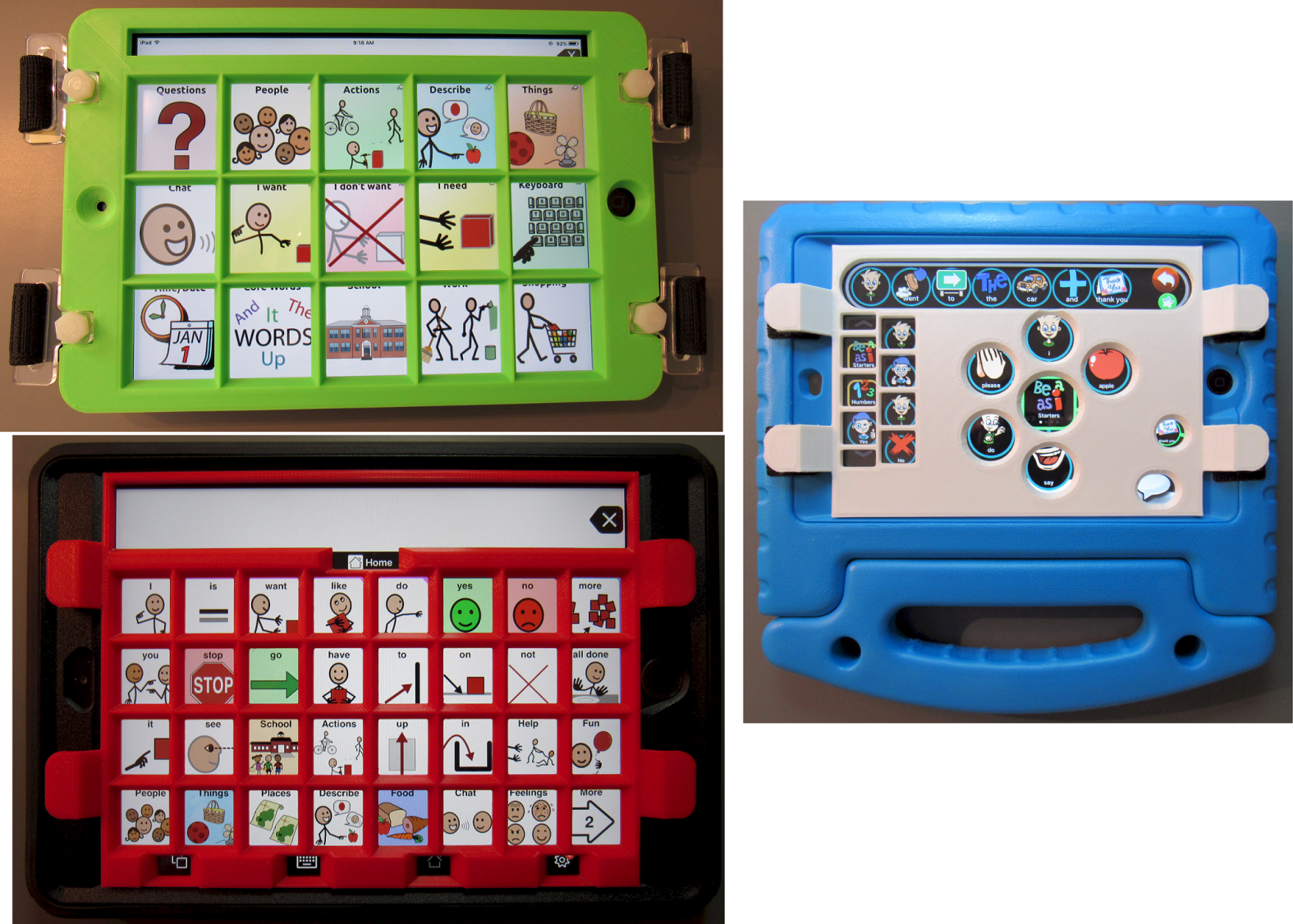 Keyguards allow individuals with limited muscle control to reliably point at regions of an app running on a tablet. They do this by physically separating access to specific regions of the tablet screen with rails that rise up from the surface of the tablet. In this case, the apps are associated with Augmented and Alternative Communication (AAC). However, any tablet app can be supported by designing a free-form keyguard. Volksswitch has premade printable templates or tools to design your own keyguard.
Keyguards allow individuals with limited muscle control to reliably point at regions of an app running on a tablet. They do this by physically separating access to specific regions of the tablet screen with rails that rise up from the surface of the tablet. In this case, the apps are associated with Augmented and Alternative Communication (AAC). However, any tablet app can be supported by designing a free-form keyguard. Volksswitch has premade printable templates or tools to design your own keyguard.
HoneyBee
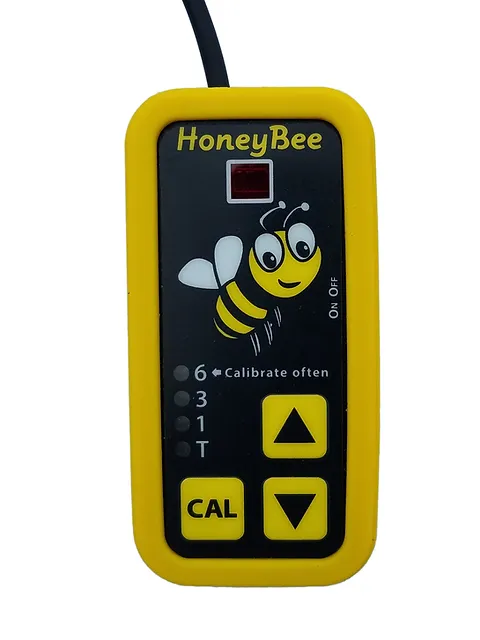 The HoneyBee switch senses the proximity of a hand, finger, head or nearly any object. To activate the HoneyBee, the user places his or her hand, head or other body part over the sensor window. An audible tone is heard when activation has occurred. See the video.
The sensing range can be adjusted for any of four distances, 6 inches, 3 inches, 1 inch or touch.
The HoneyBee switch senses the proximity of a hand, finger, head or nearly any object. To activate the HoneyBee, the user places his or her hand, head or other body part over the sensor window. An audible tone is heard when activation has occurred. See the video.
The sensing range can be adjusted for any of four distances, 6 inches, 3 inches, 1 inch or touch.
Candy Corn
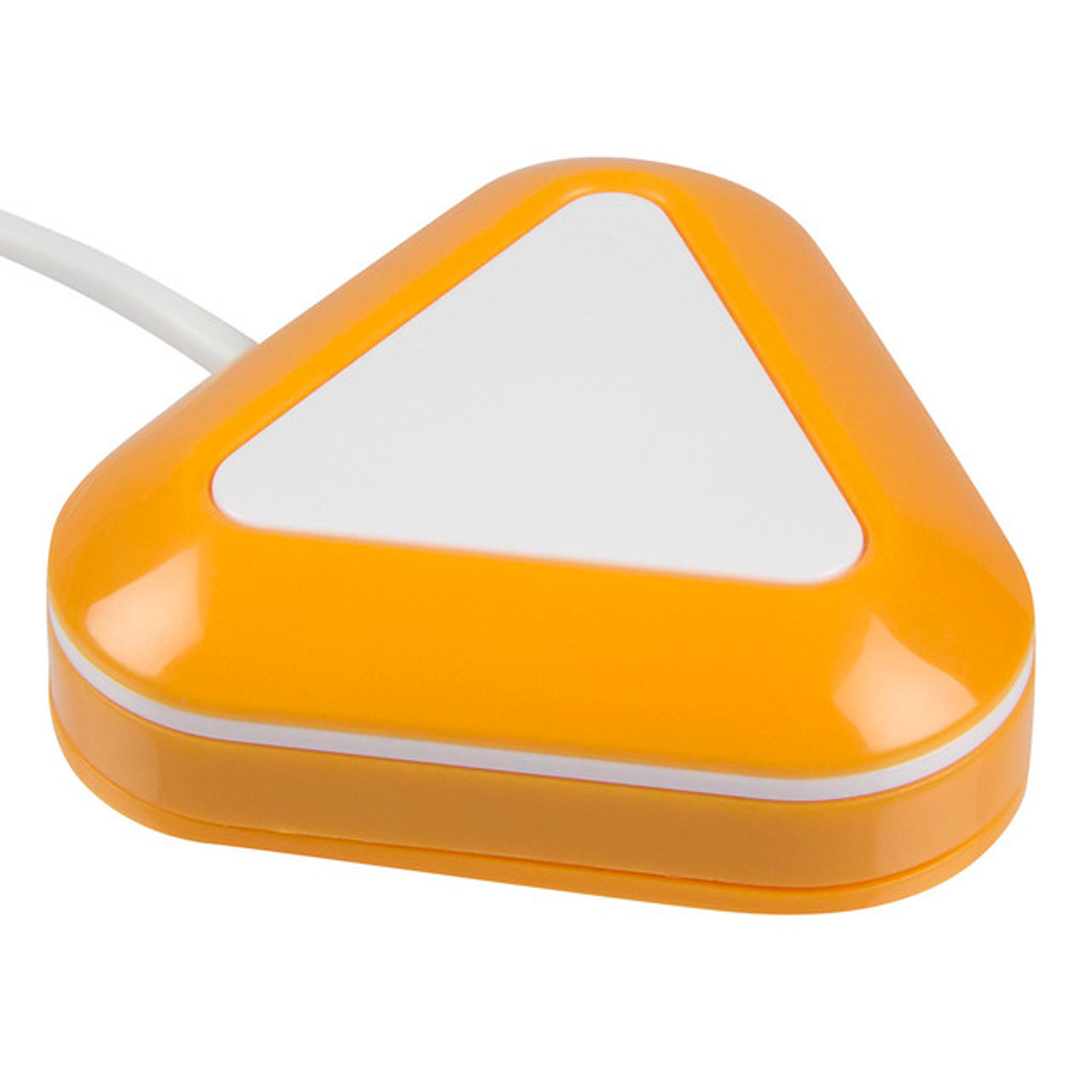 The Little Candy Corn 2 accessibility switch uses highly-sensitive proximity sensor technology for activation. Any time the user is near or touching the activation surface, the LITTLE Candy Corn accessibility switch will activate. The medium-sized activation surface is suitable for most users. When activated, an auditory beep and light appear. You may turn off the auditory beep and light if the user does not need these prompts.
The Little Candy Corn 2 accessibility switch uses highly-sensitive proximity sensor technology for activation. Any time the user is near or touching the activation surface, the LITTLE Candy Corn accessibility switch will activate. The medium-sized activation surface is suitable for most users. When activated, an auditory beep and light appear. You may turn off the auditory beep and light if the user does not need these prompts.
HeadMouse Nano
 HeadMouse replaces the standard computer mouse for people who cannot use or have limited use of their hands. The HeadMouse translates natural movements of a user's head into directly proportional mouse pointer movement – move your head and the mouse pointer follows along. The HeadMouse has a wireless optical sensor which tracks a tiny disposable target worn by the user on his/her forehead, glasses, or even a hat. It works just like a computer mouse, with the mouse pointer being controlled by head movement.
HeadMouse replaces the standard computer mouse for people who cannot use or have limited use of their hands. The HeadMouse translates natural movements of a user's head into directly proportional mouse pointer movement – move your head and the mouse pointer follows along. The HeadMouse has a wireless optical sensor which tracks a tiny disposable target worn by the user on his/her forehead, glasses, or even a hat. It works just like a computer mouse, with the mouse pointer being controlled by head movement.
 Symbol Library of the Year
Symbol Library of the Year
PCS (BoardMaker)
 For more than 30 years, Tobii Dynavox Picture Communication Symbols® (PCS) have been used by millions of students and adults to understand and structure the world around them, communicate their thoughts, and learn to read and write. Symbol-based visual supports have been proven to help people with communication, behavior and learning challenges succeed in school and life and amaze their peers, families, therapists and teachers.
For more than 30 years, Tobii Dynavox Picture Communication Symbols® (PCS) have been used by millions of students and adults to understand and structure the world around them, communicate their thoughts, and learn to read and write. Symbol-based visual supports have been proven to help people with communication, behavior and learning challenges succeed in school and life and amaze their peers, families, therapists and teachers.
SymbolStix PRIME
 SymbolStix PRIME, the evidence‑based symbol communication tool, provides that lifeline, ensuring everyone has access to learning, language and self‑expression. Learning through effective communication is at the heart of n2y’s mission, and it’s what drove the development of the 100,000+ dynamic, engaging and personally relevant education symbols in the SymbolStix PRIME database. Teachers can also embrace their multicultural classrooms through the ability to easily change skin tones and generate symbols and text in English, Spanish and 7 other languages.
SymbolStix PRIME, the evidence‑based symbol communication tool, provides that lifeline, ensuring everyone has access to learning, language and self‑expression. Learning through effective communication is at the heart of n2y’s mission, and it’s what drove the development of the 100,000+ dynamic, engaging and personally relevant education symbols in the SymbolStix PRIME database. Teachers can also embrace their multicultural classrooms through the ability to easily change skin tones and generate symbols and text in English, Spanish and 7 other languages.
LessonPix
 LessonPix is an easy-to-use online resource that allows users to create various customized learning materials. It doesn't have to be difficult or expensive to be good. We believe in the power of visuals. Our priority is to give the flexibility you need for customization, simplicity of 60,000+ symbols for families, and affordability for individuals.
LessonPix is an easy-to-use online resource that allows users to create various customized learning materials. It doesn't have to be difficult or expensive to be good. We believe in the power of visuals. Our priority is to give the flexibility you need for customization, simplicity of 60,000+ symbols for families, and affordability for individuals.
Widgit
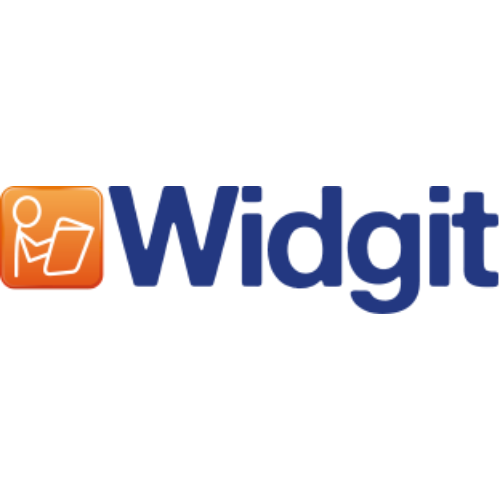 The Widgit Symbol Set is used within all Widgit products. The simply-drawn, colourful symbols each illustrate a single concept in a clear and concise way. They cover a range of topics (including many curricular areas) wide enough to make them suitable for symbol users of all ages and abilities.
The Widgit Symbol Set is used within all Widgit products. The simply-drawn, colourful symbols each illustrate a single concept in a clear and concise way. They cover a range of topics (including many curricular areas) wide enough to make them suitable for symbol users of all ages and abilities.
Global Symbols
 Global Symbols has a huge collection of high-quality symbols you can use for communication. Search our symbols, download and use them.
Global Symbols has a huge collection of high-quality symbols you can use for communication. Search our symbols, download and use them.
 AAC Vocabulary of the Year
AAC Vocabulary of the Year
WordPower
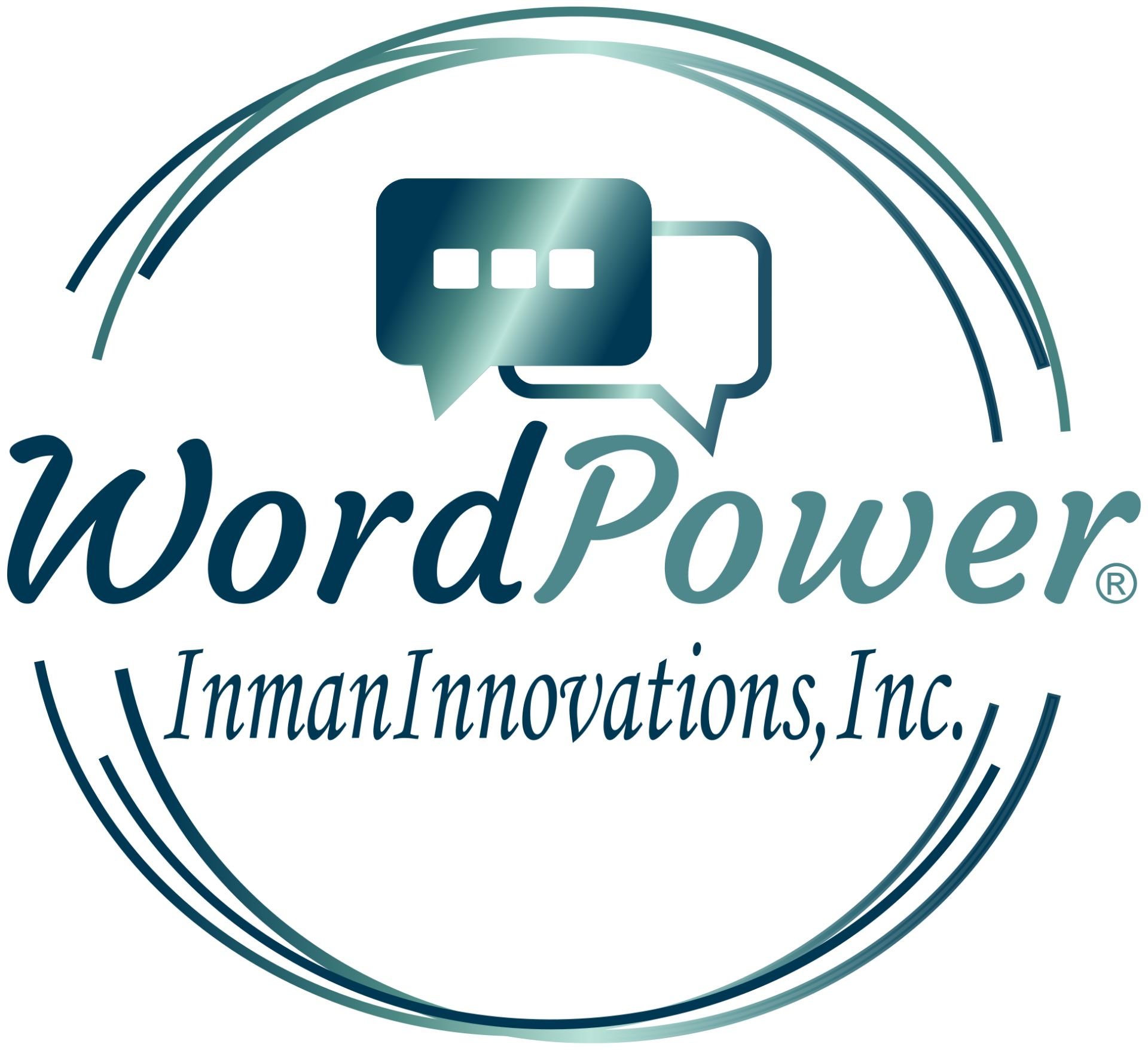 WordPower by Nancy Inman is a unique vocabulary design for an augmentative/alternative communication device. WordPower combines the features of core vocabulary, spelling and word prediction. The system takes advantage of the fact that while we may have a normal speaking vocabulary of between 10,000 and 30,000 words, a core of just 100 words accounts for approximately 50 percent of words spoken.
WordPower by Nancy Inman is a unique vocabulary design for an augmentative/alternative communication device. WordPower combines the features of core vocabulary, spelling and word prediction. The system takes advantage of the fact that while we may have a normal speaking vocabulary of between 10,000 and 30,000 words, a core of just 100 words accounts for approximately 50 percent of words spoken.Nancy has customized WordPower for multiple AAC systems, and it was originally designed for an individual in need of an augmentative communication device based on words. A vocabulary based on pre-stored sentences would not meet his communication needs. Though he could see the advantage of a picture-based system with symbol sequencing, he did not want to learn the complex language coding system. At the same time, he wanted more than a system based on spelling and word prediction. WordPower provided him a fast and efficient language, with minimal time and effort required for learning the system.
Words For Life/Unity
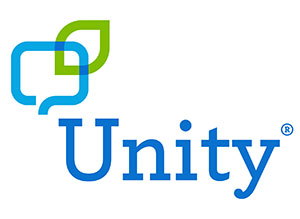 Unity® is the original and most established AAC vocabulary system in the industry. Known for its multi-meaning Minspeak® symbols and consistent motor plans, Unity helps communicators of all ages, skill levels, and access methods learn quickly and build language skills for maximum independence. This research-based vocabulary supports individuals with apraxia, cerebral palsy, autism, Down syndrome, Rett syndrome, and other communication challenges. Unity is also the foundation of LAMP Words for Life® and CoreScanner™ vocabularies. Bilingual options available.
Unity® is the original and most established AAC vocabulary system in the industry. Known for its multi-meaning Minspeak® symbols and consistent motor plans, Unity helps communicators of all ages, skill levels, and access methods learn quickly and build language skills for maximum independence. This research-based vocabulary supports individuals with apraxia, cerebral palsy, autism, Down syndrome, Rett syndrome, and other communication challenges. Unity is also the foundation of LAMP Words for Life® and CoreScanner™ vocabularies. Bilingual options available.
Crescendo
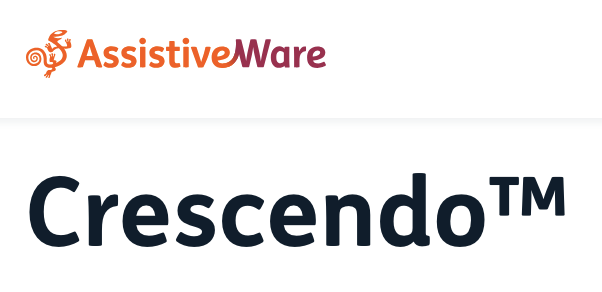 The Crescendo vocabulary offers consistent core word placement, extensive fringe and flexibility. Easy access to “core words” is key for efficient communication. Core words are the high-frequency words, such as “I”, “you”, “go”, “do” that make up most of what we say. But not every AAC vocabulary keeps them in a consistent location. In Crescendo, buttons for core words appear in the same place on the home and fringe pages. This consistency supports learning through motor planning, a process your brain goes through when learning a new skill. Through consistent repetition, you learn to carry out tasks automatically.
The Crescendo vocabulary offers consistent core word placement, extensive fringe and flexibility. Easy access to “core words” is key for efficient communication. Core words are the high-frequency words, such as “I”, “you”, “go”, “do” that make up most of what we say. But not every AAC vocabulary keeps them in a consistent location. In Crescendo, buttons for core words appear in the same place on the home and fringe pages. This consistency supports learning through motor planning, a process your brain goes through when learning a new skill. Through consistent repetition, you learn to carry out tasks automatically.
TD Snap Motor Plan
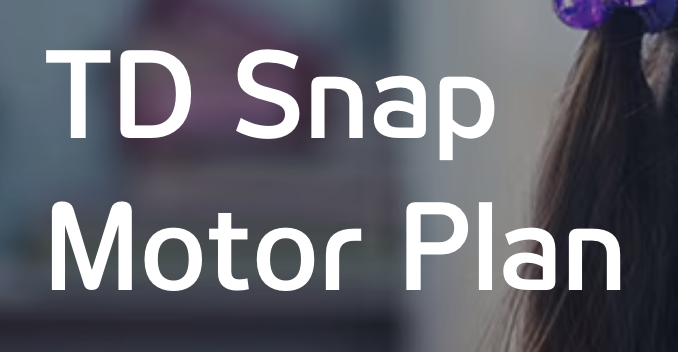 TD Snap Motor Plan is an efficient way for learners with complex access needs to develop language. This page set focuses on core words and word-by-word sentence construction. Each word appears only once with a distinct path, or motor plan, to find it. Over time, the communicator will effortlessly locate words, allowing them to focus more on what they want to say. TD Snap Motor Plan has pagesets available in English, Spanish, and Spanish/English bi-lingual including Castellano and Español Latino dialects.
TD Snap Motor Plan is an efficient way for learners with complex access needs to develop language. This page set focuses on core words and word-by-word sentence construction. Each word appears only once with a distinct path, or motor plan, to find it. Over time, the communicator will effortlessly locate words, allowing them to focus more on what they want to say. TD Snap Motor Plan has pagesets available in English, Spanish, and Spanish/English bi-lingual including Castellano and Español Latino dialects.
Step Up
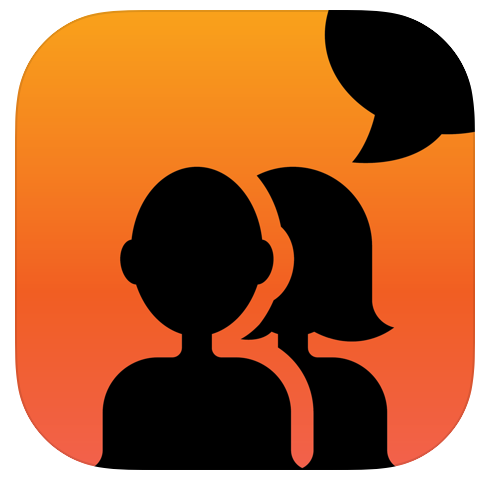 Meet Avaz’s expanded, clutter-free vocabulary – designed to ensure that communication becomes a seamless extension of thoughts and emotions. This new robust vocabulary is category-based and ensures motor planning at each step. Hence, it brings you the best of both worlds. This vocabulary design also comes with a frozen row of folders at the bottom, exclusively for high frequency words. This feature accelerates communication by instant access to essential vocabulary irrespective of where you are in your AAC. These aspects of the design make the communication quicker, making the user rely on and trust their AAC.
Meet Avaz’s expanded, clutter-free vocabulary – designed to ensure that communication becomes a seamless extension of thoughts and emotions. This new robust vocabulary is category-based and ensures motor planning at each step. Hence, it brings you the best of both worlds. This vocabulary design also comes with a frozen row of folders at the bottom, exclusively for high frequency words. This feature accelerates communication by instant access to essential vocabulary irrespective of where you are in your AAC. These aspects of the design make the communication quicker, making the user rely on and trust their AAC.
 Vendor AAC Blog of the Year
Vendor AAC Blog of the Year
AssistiveWare
 The AssistiveWare Blog and Learn AAC offers a treasure trove of knowledge and resources for anyone in the AAC field. Available in English, Spanish, French and Dutch, it stand out as a platform for sharing expertise and advocating for the AAC community, empowering readers with practical strategies and inspiring stories. Its content is essential for educators, therapists, and family members seeking to support communication for those with speech disabilities, enhancing understanding and promoting advocacy.
The AssistiveWare Blog and Learn AAC offers a treasure trove of knowledge and resources for anyone in the AAC field. Available in English, Spanish, French and Dutch, it stand out as a platform for sharing expertise and advocating for the AAC community, empowering readers with practical strategies and inspiring stories. Its content is essential for educators, therapists, and family members seeking to support communication for those with speech disabilities, enhancing understanding and promoting advocacy.
CoughDrop
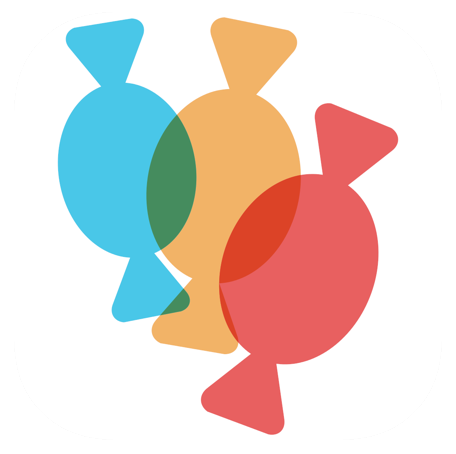 CoughDrop's blog includes updates about the
CoughDrop AAC app, strategic approaches to AAC,
and important topics that need to be both
considered and addressed by the AAC community
at large.
CoughDrop's blog includes updates about the
CoughDrop AAC app, strategic approaches to AAC,
and important topics that need to be both
considered and addressed by the AAC community
at large.
Smartbox
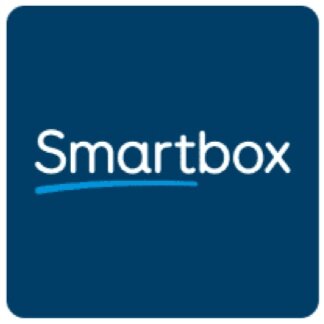 The Smartbox blog is a single source of news for
Grid updates as well as AAC in general. It includes
product updates and strategies, user stories,
upcoming events and news, and more.
The Smartbox blog is a single source of news for
Grid updates as well as AAC in general. It includes
product updates and strategies, user stories,
upcoming events and news, and more.
Avaz
 The Avaz blog includes updates on the Avaz family
of products, as well as general AAC implementation
strategies and posts both from and about AAC
users through the "Avaz Megaphone" category.
The Avaz blog includes updates on the Avaz family
of products, as well as general AAC implementation
strategies and posts both from and about AAC
users through the "Avaz Megaphone" category.
 Lifetime Achievement (Judges' Selection)
Lifetime Achievement (Judges' Selection)
Caroline Musselwhite
 Dr. Caroline Musselwhite is an assistive technology specialist with more than 50 years of experience working with children and adolescents with severe disabilities, in a variety of settings, including Head Start, developmental day programs, and the public schools. She has also taught courses at several universities, including West Virginia University, and Western Carolina University. Dr. Musselwhite has authored a number of textbooks and “how-to” books on a range of topics. She has also authored a number of software programs and books for youth with disabilities. She has presented thousands of workshops throughout the world, and is a founding member of the Board of Directors for the International Society for Augmentative and Alternative Communication (ISAAC).
Dr. Musselwhite has dedicated so much of her time and
life to supporting AAC and literacy. She works directly
with families and refuses to settle for subpar
interventions and supports for AAC users. She is a
high-energy presenter and speaks in an
approachable way that helps many families and support
teams better understand how to be more effective
in their AAC support strategies.
Dr. Caroline Musselwhite is an assistive technology specialist with more than 50 years of experience working with children and adolescents with severe disabilities, in a variety of settings, including Head Start, developmental day programs, and the public schools. She has also taught courses at several universities, including West Virginia University, and Western Carolina University. Dr. Musselwhite has authored a number of textbooks and “how-to” books on a range of topics. She has also authored a number of software programs and books for youth with disabilities. She has presented thousands of workshops throughout the world, and is a founding member of the Board of Directors for the International Society for Augmentative and Alternative Communication (ISAAC).
Dr. Musselwhite has dedicated so much of her time and
life to supporting AAC and literacy. She works directly
with families and refuses to settle for subpar
interventions and supports for AAC users. She is a
high-energy presenter and speaks in an
approachable way that helps many families and support
teams better understand how to be more effective
in their AAC support strategies.
Thank you for supporting the world of AAC! We look forward to hosting the awards again in 2026! The knAAC Awards are one of the important projects we host as a non-profit in the AAC community. Please consider donating to help us continue funding this and other work to help lift everyone in the world of AAC!
Help Us Grow!
OpenAAC needs donations like yours to expand our reach and continue to provide meaningful resources that will help everyone at every point on their AAC journey.